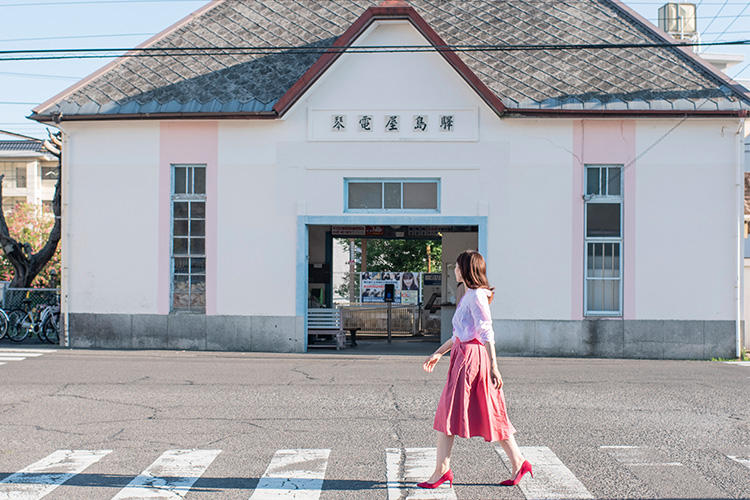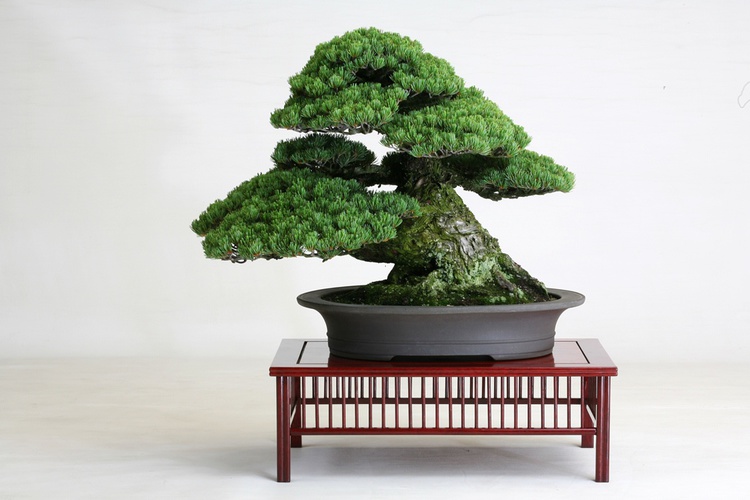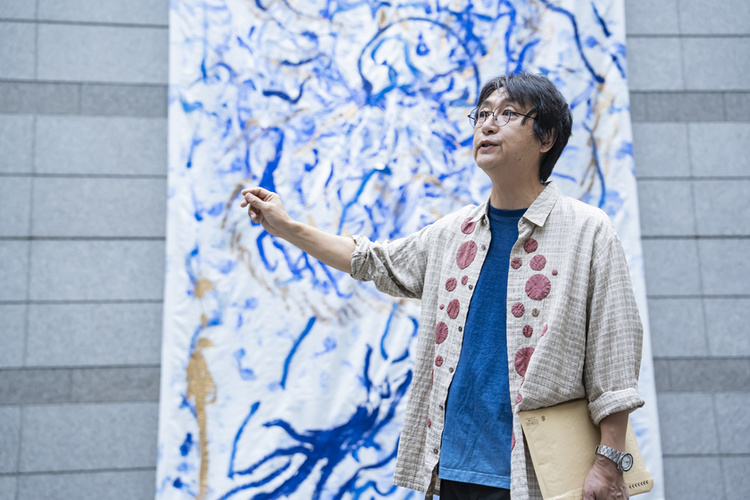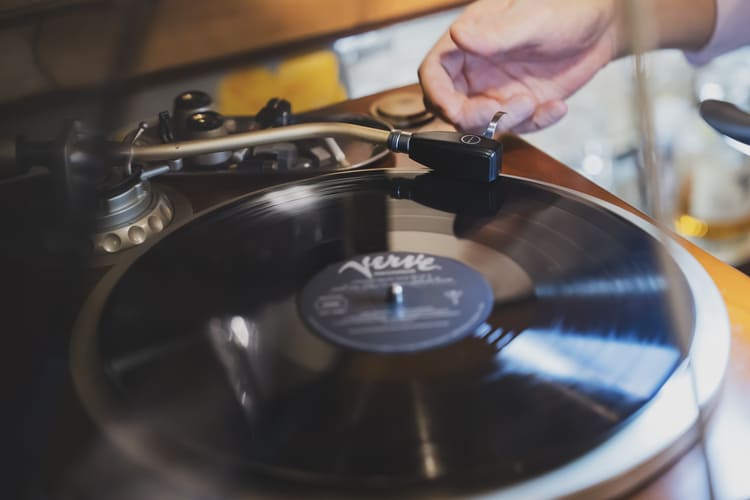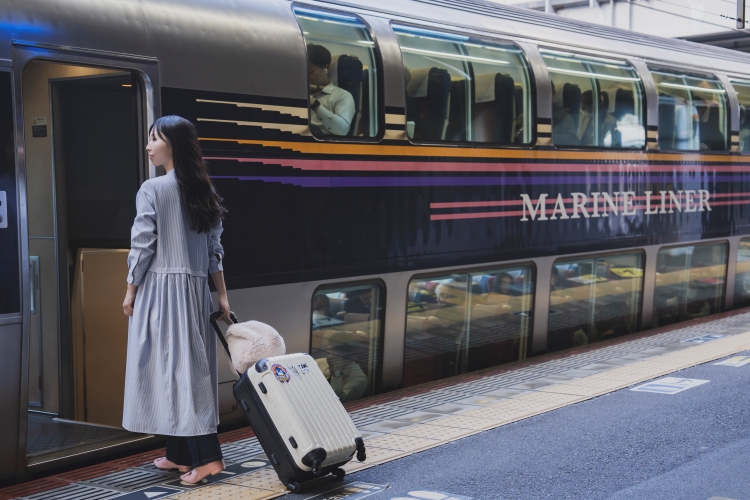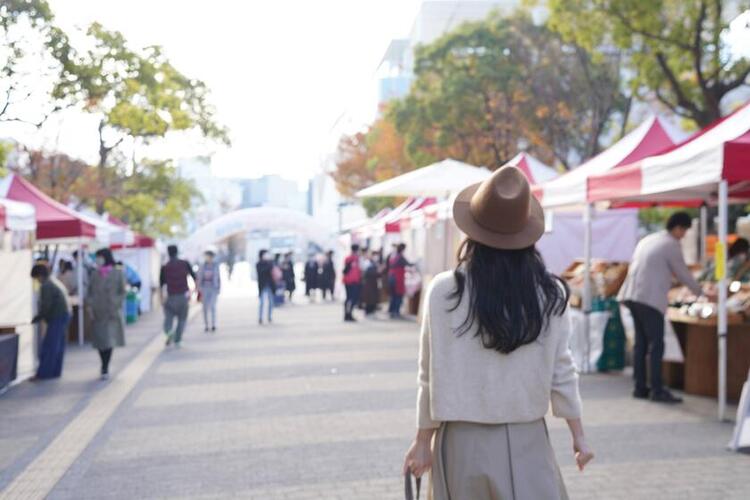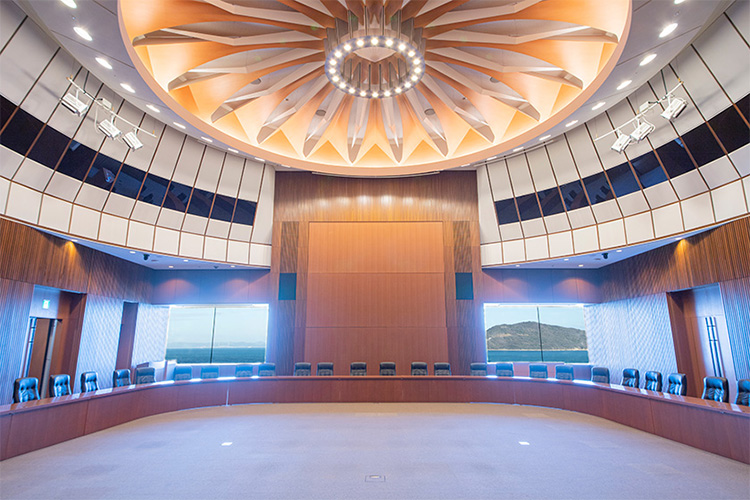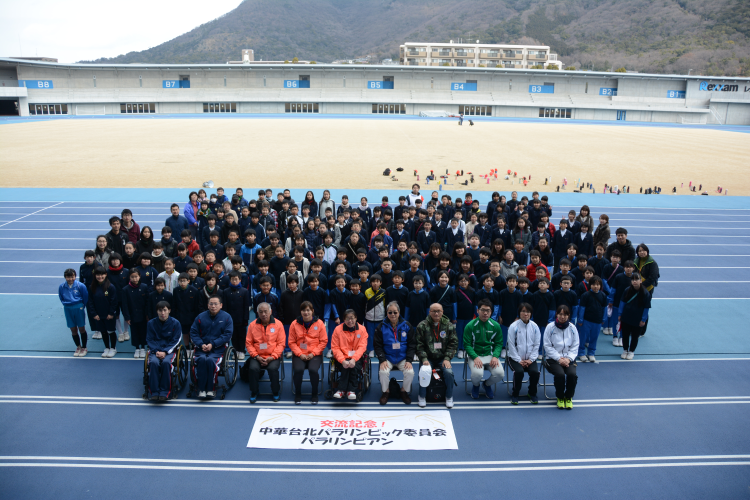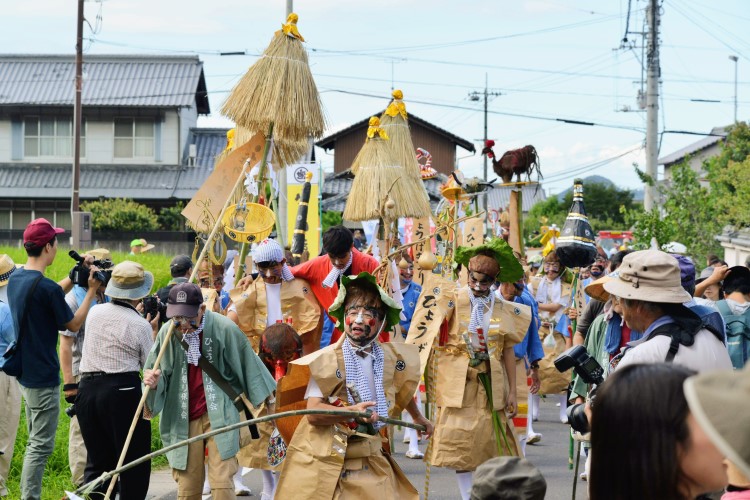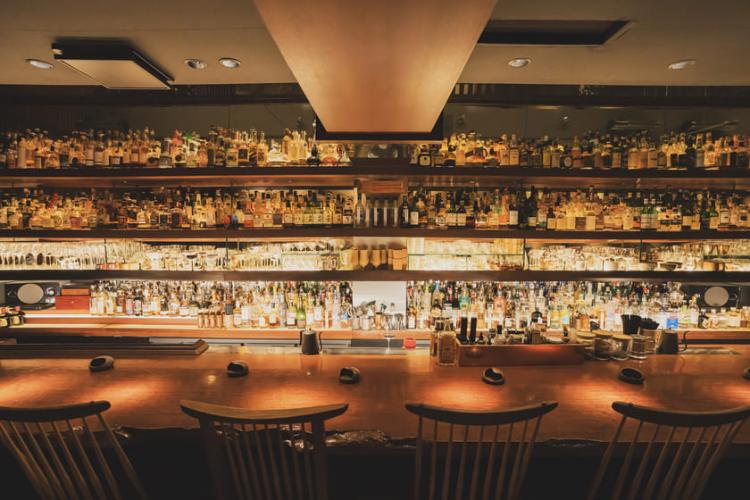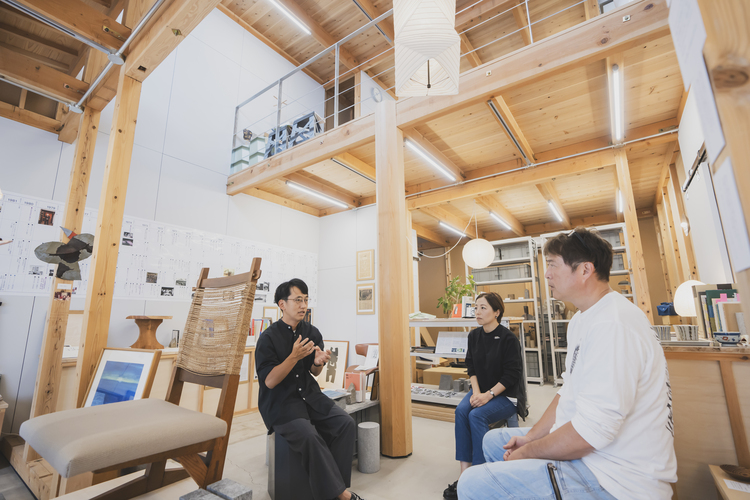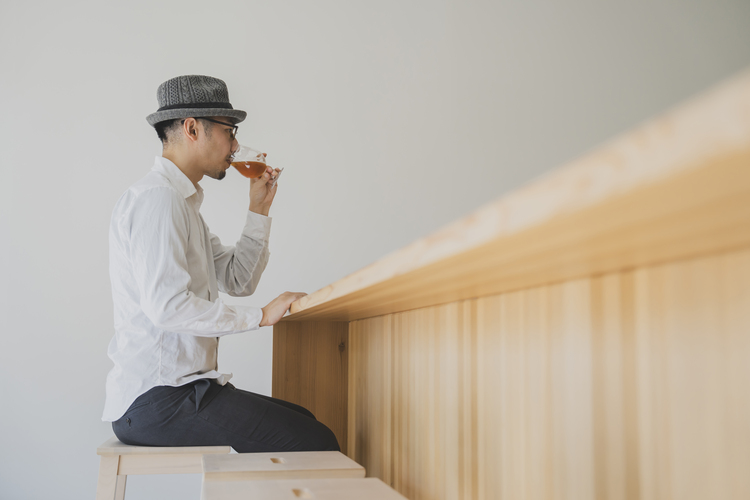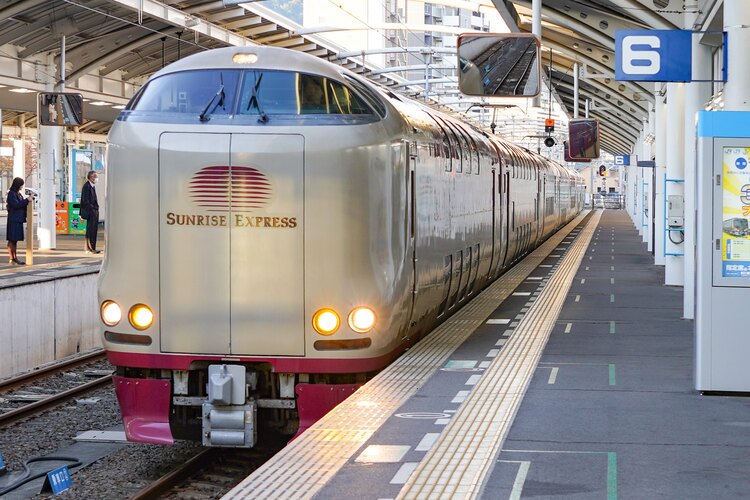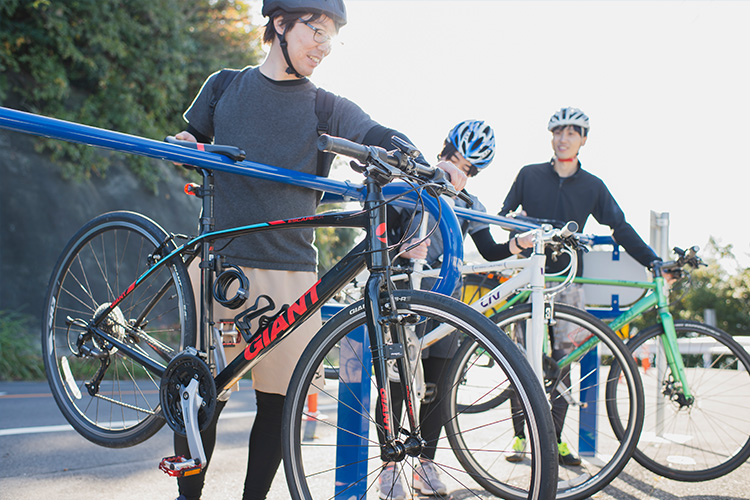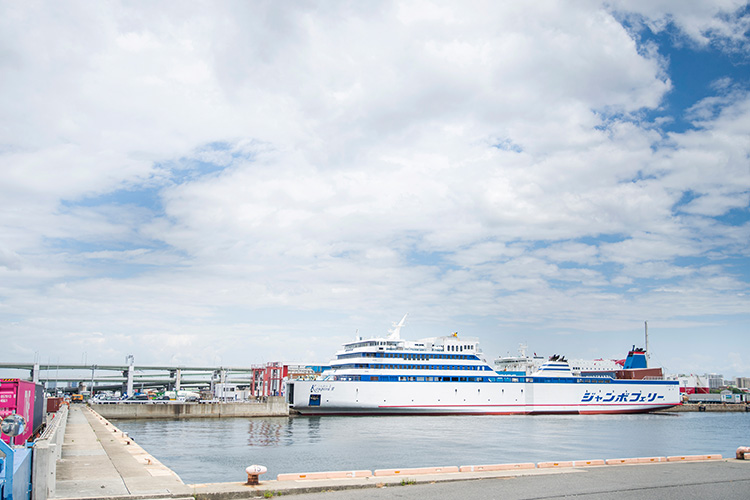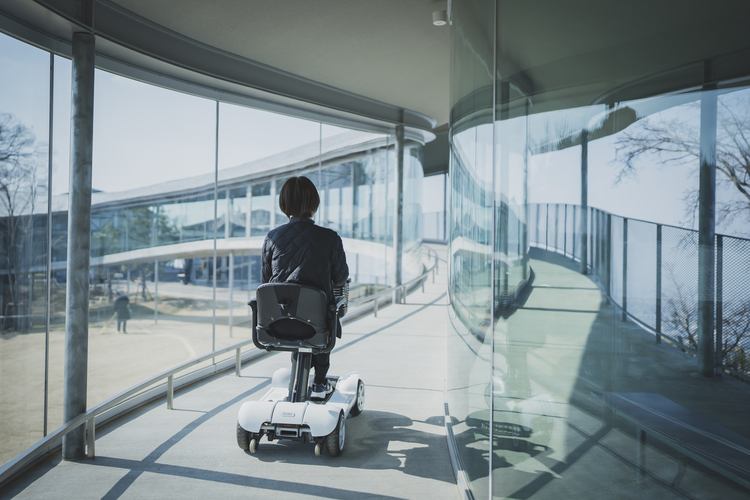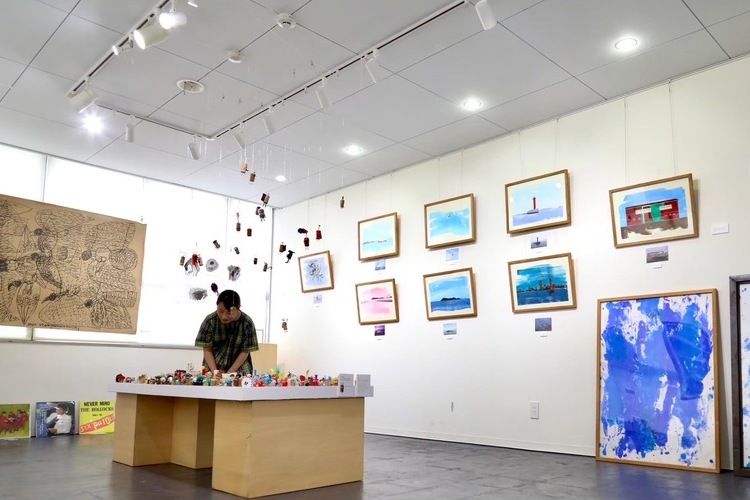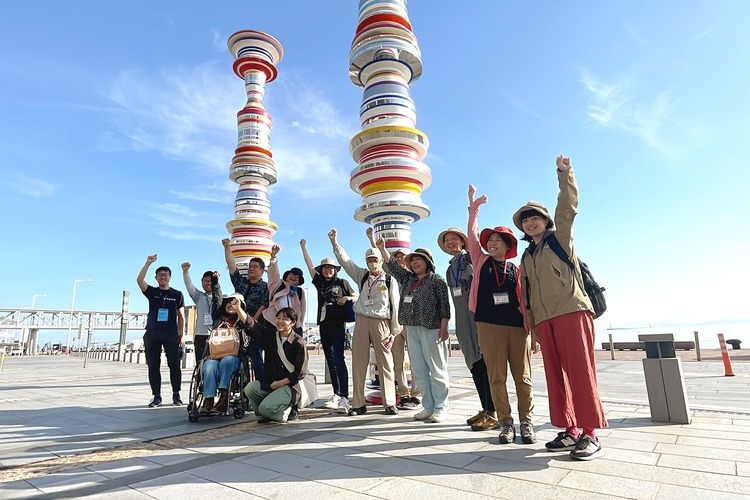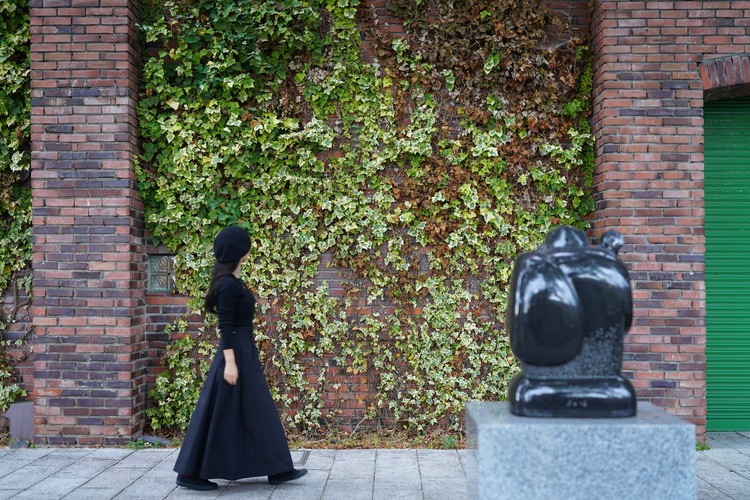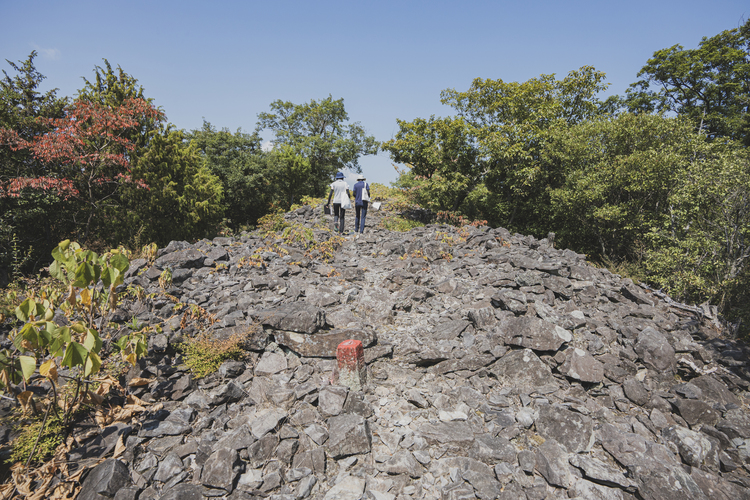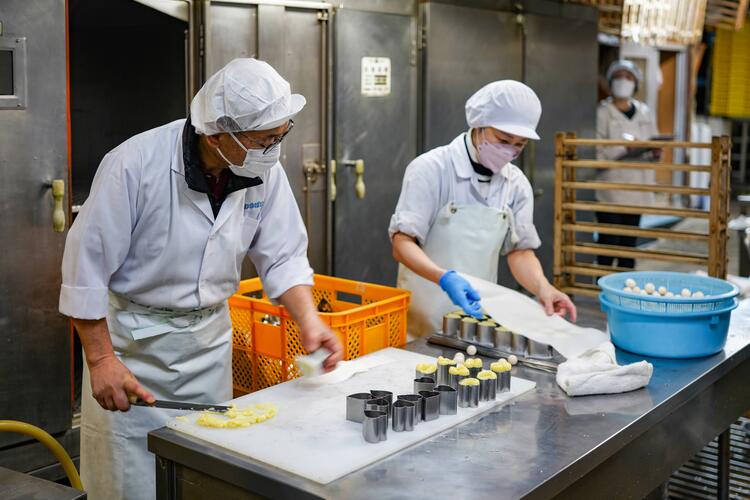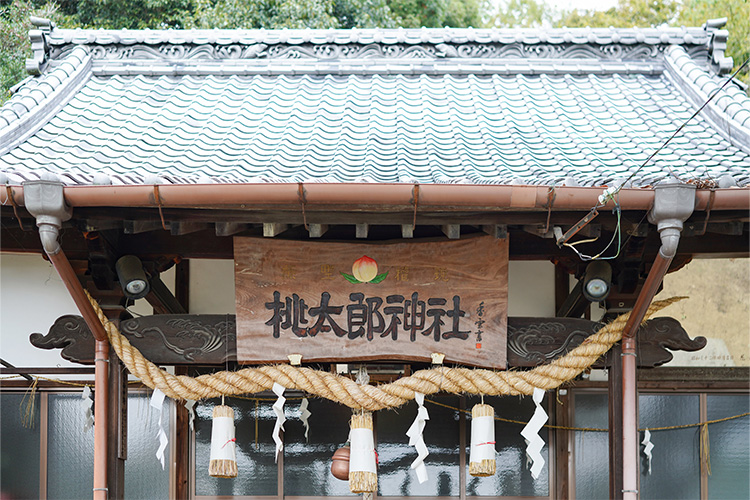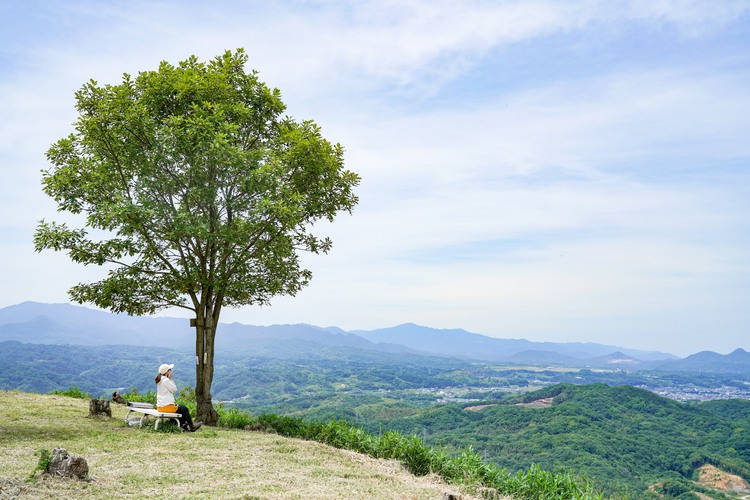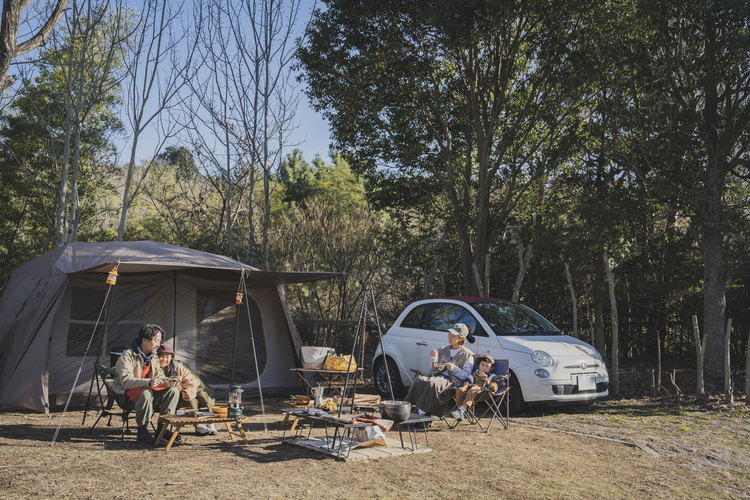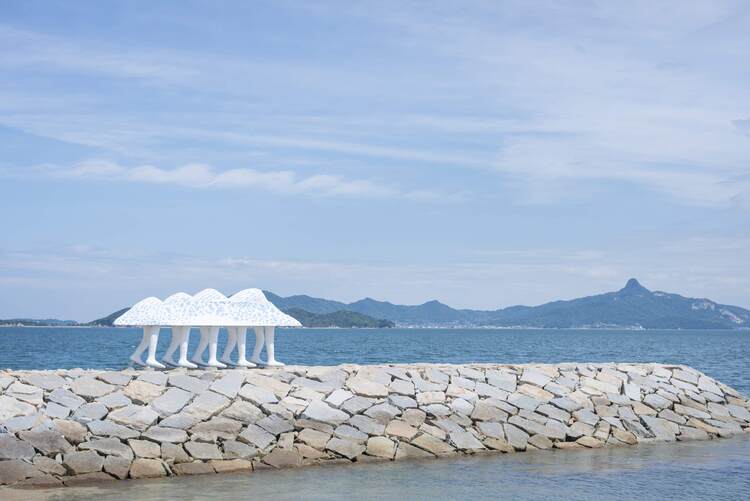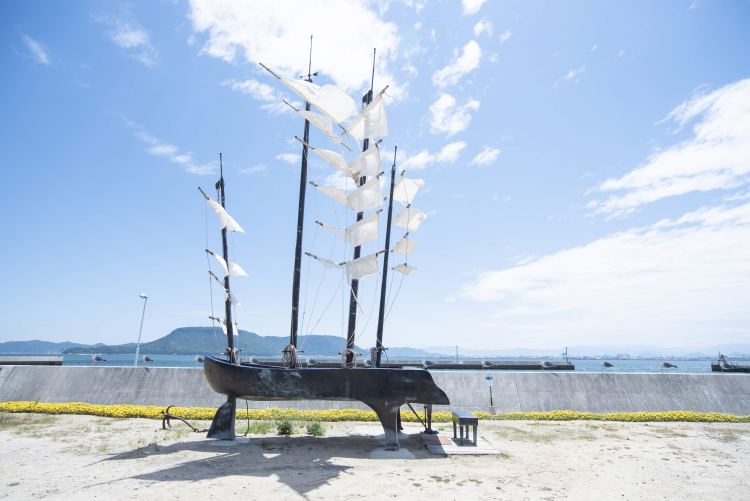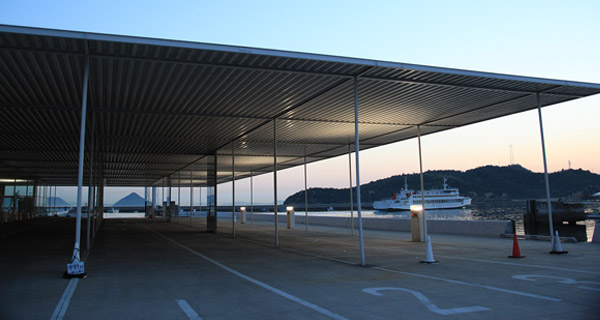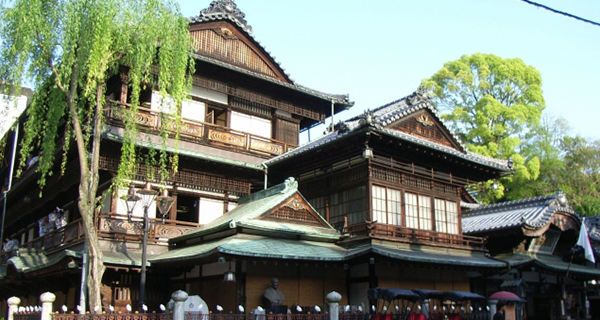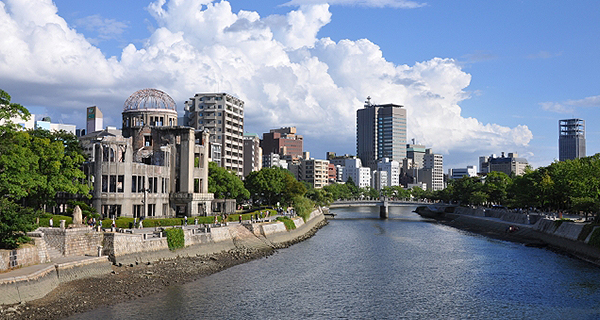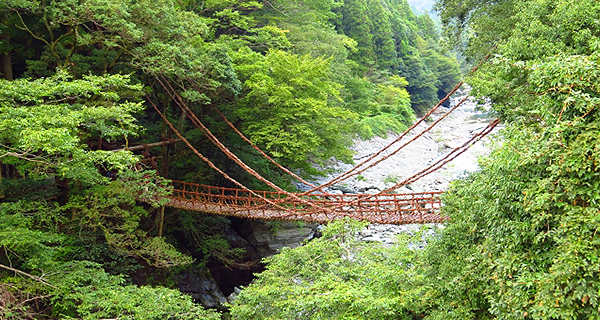Here are some tips and useful information to help you order Udon noodles with confidence in the heart of Sanuki Udon Country!
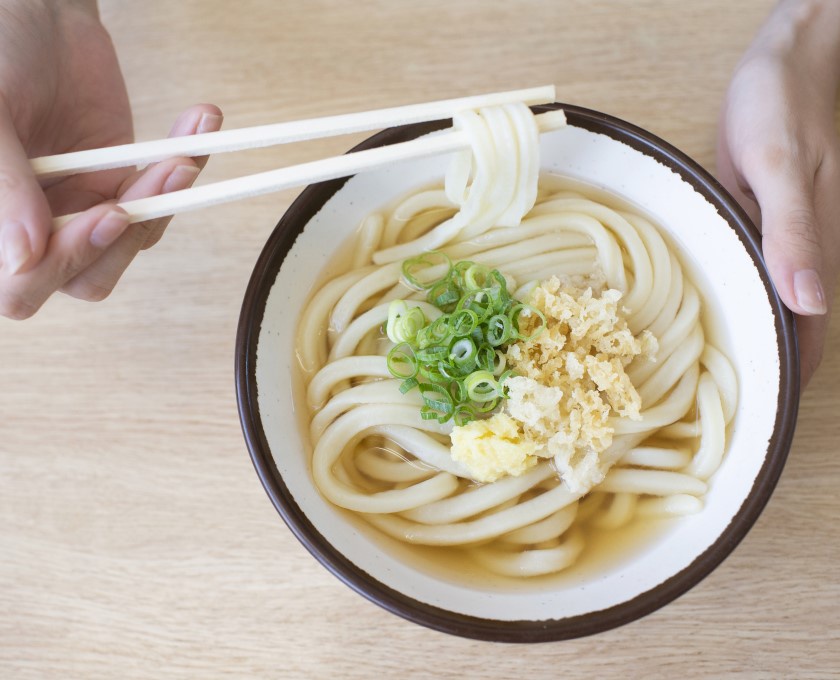
Three Types of Udon Noodle Shops
Full-Service Udon Restaurants
Like a regular restaurant, you will be seated by the staff. They will take your order and bring Udon to you.
Self-Service Udon Noodle Shops
You will order and receive Udon at the counter, and take it to the table yourself. When you are done, return the tray to the return counter.
* Though it depends on the shop, some allow you to fully experience making “Kake Udon” by warming up noodles and pouring Dashi broth by yourself.
Noodle-Making Factories
They are wholesale Udon noodle manufactures. In one corner of the noodle factory, there is a simple eat-in space with Dashi broth, soy sauce, condiments, and basic tableware. The greatest thing is that you can eat freshly made Udon on the spot.
Basic Knowledge of Udon Noodles
Freshly made Udon noodles are boiled in a pot for about 10 to 15 minutes, cooled in cold water, and arranged in single servings one by one in a noodle container.
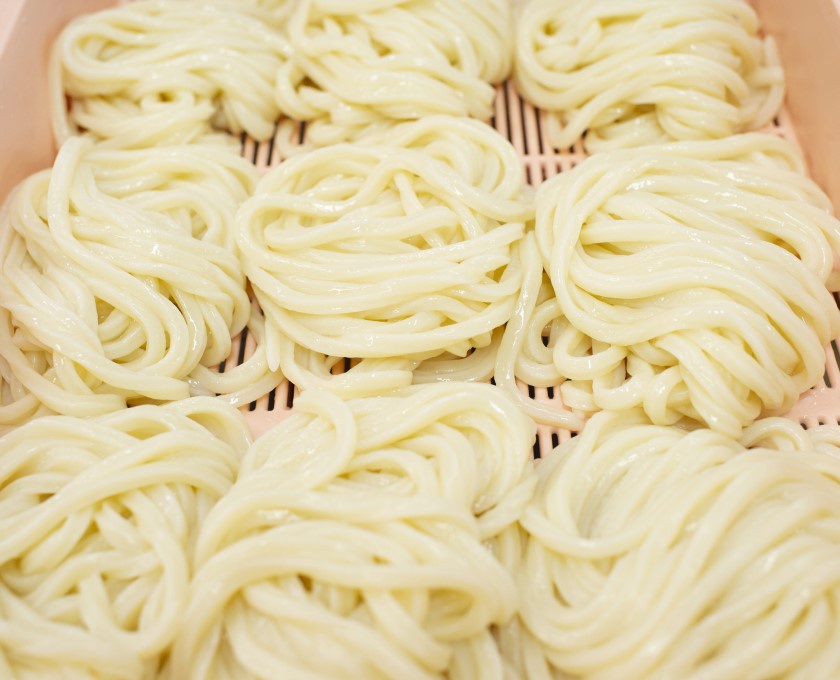
Different Phases of Cooked Udon Noodles:
Phase 1: Noodles Right out of the Pot (Kamaage)
Udon is served freshly boiled out of pot, and it is hot to the core. The noodles are slightly soft, but still maintain the perfect firm texture.
Phase 2: Cooled in Cold Water
Udon is firmed up after the phase 1 by cooling in water. You can best taste the distinct firm texture of the noodles at this phase.
Phase 3: Reheat
Udon is reheated by quickly boiling the noodles from phase 2. The firmness is a happy medium between the softer Kamaage noodles and firmer cold noodles.
Phase 4: Cook and Simmer
This is a variety of Udon in which the cooked noodles from phase 2 and cooked ingredients are put together and simmered. There are also some menu items that use freshly-made Udon noodles instead of pre-boiled ones.
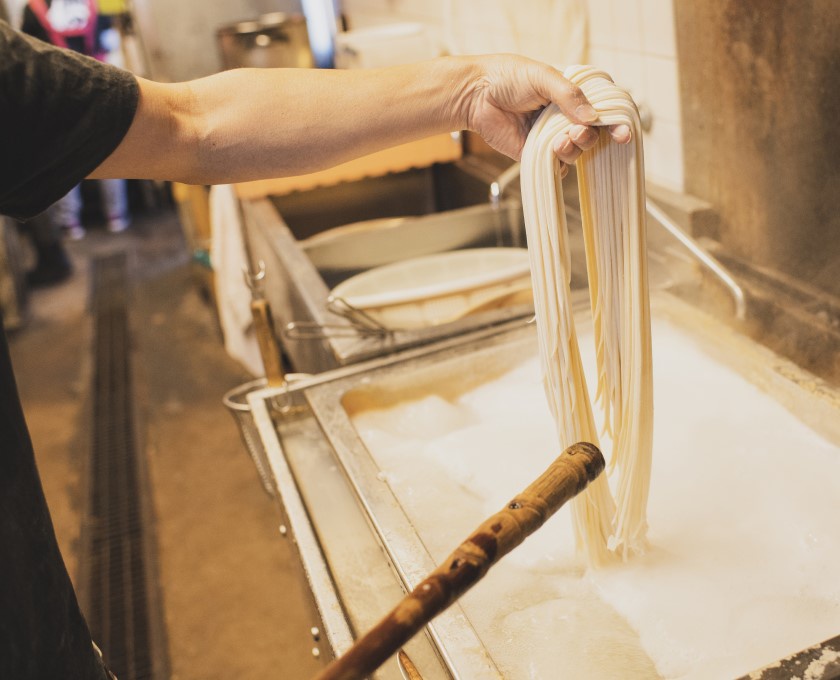
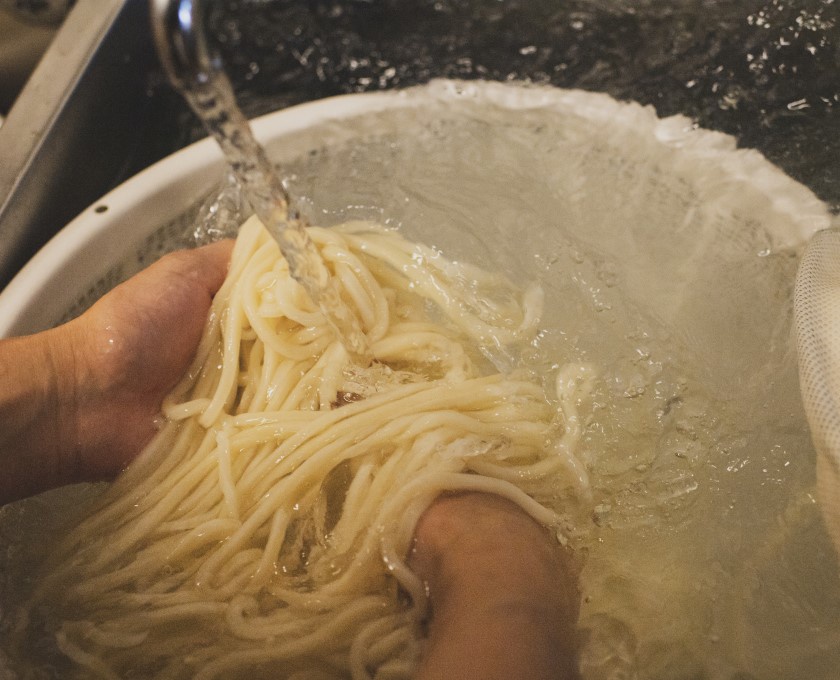
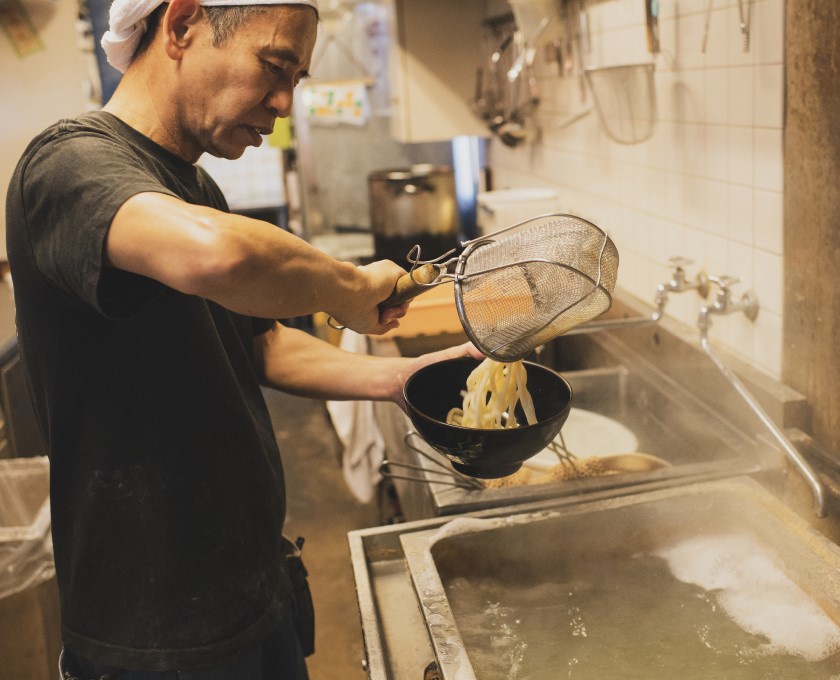
Kagawa Local Products Promotion Organization
The Basics of Dashi Broth
Udon soup stock and soup broth are all "Dashi" in Sanuki, which is the old name of Kagawa. Dashi broth is usually made with dried sardines (Iriko), kelp, bonito flakes, and more. Then, it is seasoned with soy sauce, sweet cooking rice wine (mirin), sugar, and sake.
Types of Dashi Broth
- Tsuke Dashi, Dipping Sauce
- Kake Dashi, Broth with a light yet complex flavor
- Bukkake Dashi (some may just use Tsuke Dashi) …a more concentrated broth. It has a stronger, more intense flavor and a darker color than Kake Dashi.
Udon Menu by Type of Noodles
Notation: a common "Menu Name" in quotation marks and [a type of Dashi broth to go with] in square brackets
*Please note that some eateries and menu items may not follow this classification.
Phase 1: Kamaage: piping hot noodles straight out of the boiling water
Definition: Udon noodles not cooled in cold water after boiling
“Kamaage” [Tsuke Dashi]
The standard “Kamaage” is served with hot water in which noodles were boiled and eaten with Tsuke Dashi, a dipping sauce. Depending on the timing of order, you may wait 15 minutes or so for boiling noodles on the spot. Nonetheless, the freshly made Kamaage Udon tastes heavenly!
For Your Information...
Freshly boiled "Kamaage" has a nice springy texture and is slightly more tender than noodles cooled in cold water. Since the noodles are covered with starchy coating, dark Tsuke Dashi dipping sauce sticks well. With Kamaage, you can savor the texture of the delicious noodles with every bite. "Kamaage" can also be spelled as "Kama-age" or "Kama age." Also, in Japanese, 釜揚げ or 釜上げ.
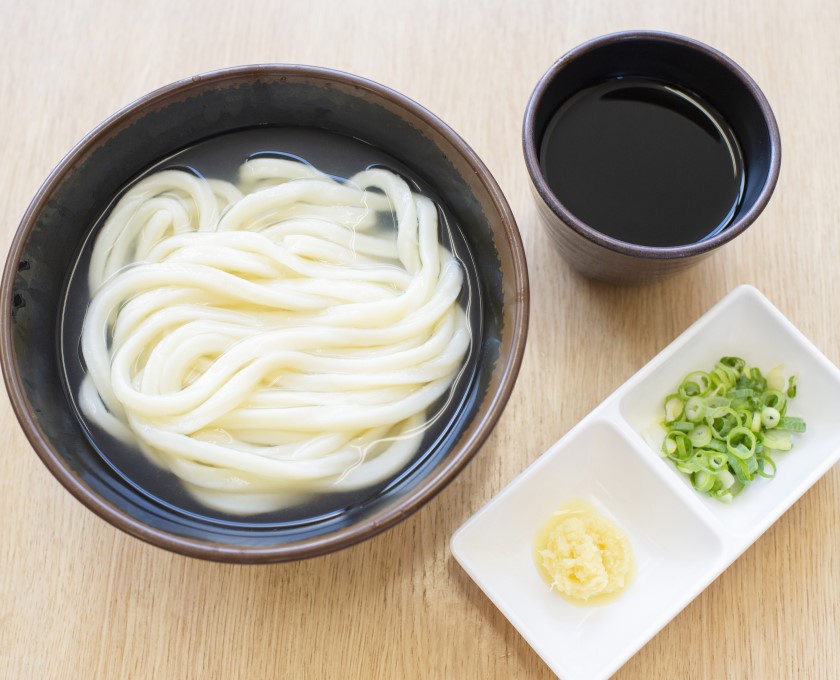
▼Kamaage Variations:
“Kamakake” [Kake Dashi]
Hot Kake Dashi, lighter broth, is poured over Kamaage noodles.
"Kama Bukkake" [Bukkake Dashi]
Bukkake Dashi, concentrated darker broth, is poured over Kamaage noodles.
"Kamatama" [Soy Sauce]
Hot Kamaage noodles are tossed in with a raw egg and soy sauce. The residual heat of the noodles warms the egg, which becomes melty and clings to the noodles. Absolutely fantastic!
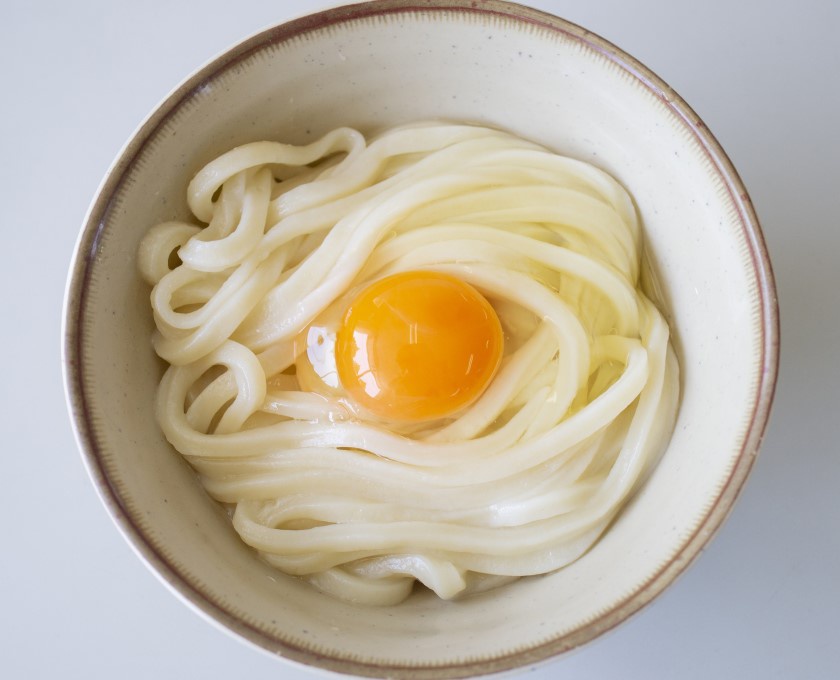
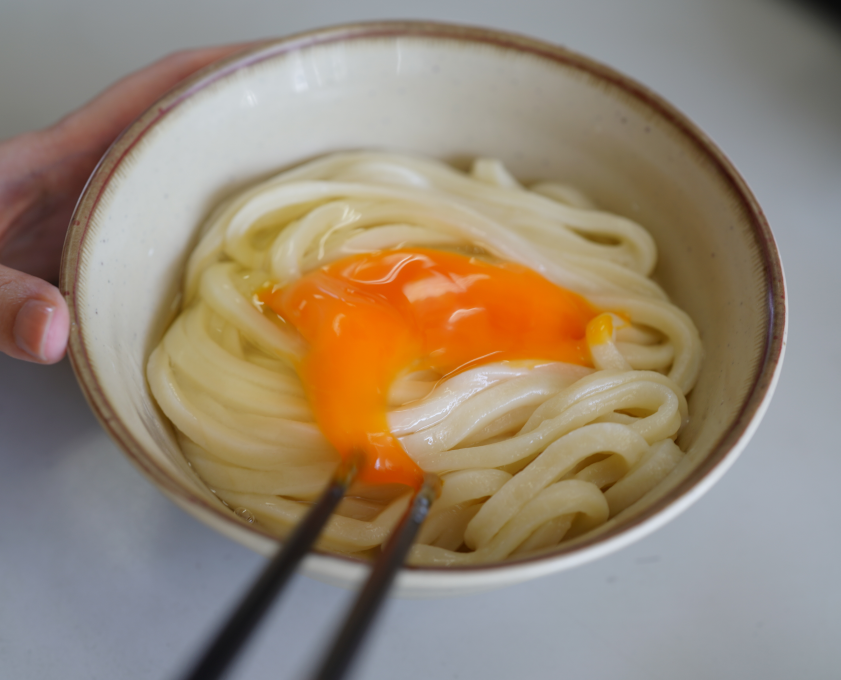
"Kama Butter" (Soy Sauce)
This new menu item adds a twist to Kamatama with butter and black pepper. Add some soy sauce, too.
Some eateries may not carry "Kamaage" while other shops may offer unique Kamaage with a variety of toppings.
Phase 2: Firm Noodles in Cold Water
Boiled Udon noodles are cooled in water, firmed up, and arranged in single servings one by one in a noodle container.
For Your Information...
After boiling, noodles are cooled with water to firm up. This is actually the most common form of Sanuki Udon noodles.
Udon connoisseurs pay attention to the edges of the noodles. They would praise the noodle-making and boiling techniques if the Udon has an edge. Know the edge and join the ranks of Udon aficionados!
"Zaru" [Tsuke Dashi]
Chilled Udon noodles are served on a flat bamboo sieve, called Zaru, and eaten with a rich, dark dipping sauce, Tsuke Dashi.
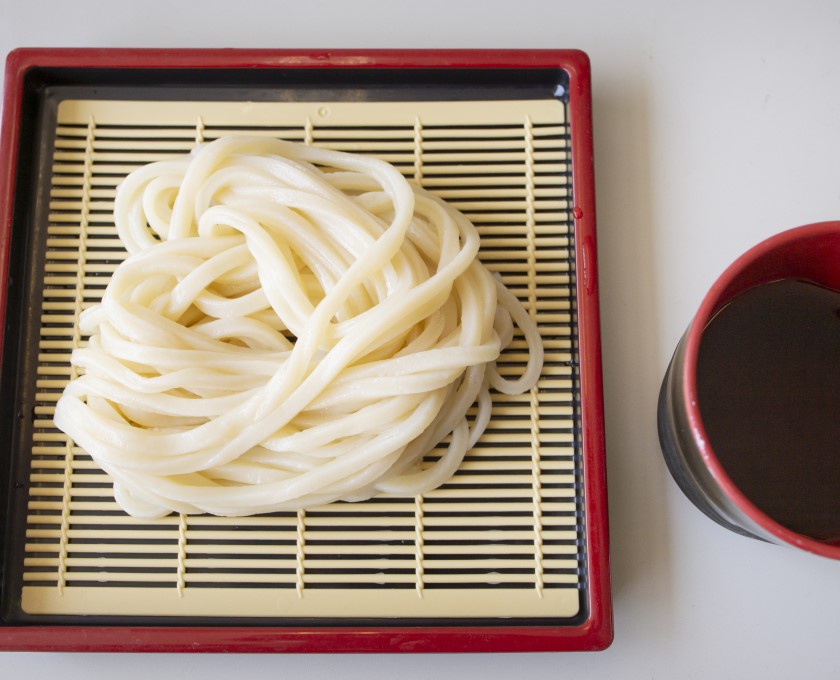
▼Kamaage Variations:
"Hiyashi" [Tsuke Dashi]
Chilled Udon noodles are served in a bowl of cold water and eaten with a rich, dark dipping sauce.
"Hiya Kake" or "Hiya Hiya" [Kake Dashi]
Chilled lighter broth, Kake Dashi, is poured over chilled Udon noodles. Recommended for those who seek Koshi, firmness to the bite.
"Hiya Atsu" or "Kake Sono-mama" [Kake Dashi]
Hot lighter broth is poured over chilled Udon noodles. As a result, the opposing temperatures allow you to savor the flavor of the warm Dashi and the firm texture of noodles. This one is also for those who seek Koshi, firmness to the bite.
Trivia
"Hiya Hiya" and "Hiya Atsu" are technical jargons, so to speak, used in some self-service Udon shops.
As a rule of thumb, the temperature of the Noodles comes first, followed by the temperature of Dashi Broth:
Atsu means hot, Hiya means cold, and Sono-mama means leave it as is.
- Atsu Atsu (hot / hot) = Hot Noodles x Hot Dashi
- Atsu Hiya (hot / cold) = Hot Noodles x Cold Dashi
- Hiya Atsu (cold / hot) = Cold Noodles x Hot Dashi
- Sonomama (leave it as is) = Cold Noodles x Hot Dashi
* Sono-mama is also known as Hiya Atsu - Hiya Hiya (cold / cold) = Cold Noodles x Cold Dashi
Even though we call it "Hiya" or cold noodles, they are kept at room temperature after cooled in cold water to firm up. "Hiyashi Udon" is the only menu item with noodles chilled and served in ice water or cold water.
“Bukkake (cold)” [Bukkake Dashi]
It’s a combination of cold noodles and cold concentrated darker broth. As a side note, Bukkake means to pour/splash Dashi directly onto noodles. Bukkake Dashi is made specifically for Bukkake Udon. At a self-service Udon shop, you can top it with your favorite fried foods to your liking!
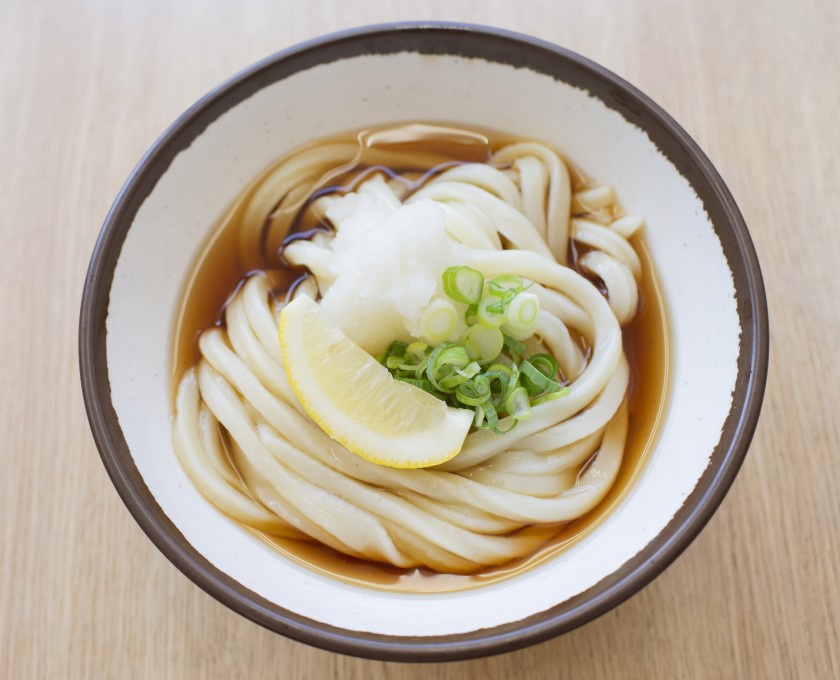
"Shoyu (cold)" or "Kijyoyu (cold)" (Shoyu and Su, vinegar)
Pour soy sauce, Shoyu in Japanese, or Dashi Shoyu, which is soy sauce blended with Dashi, over the noodles that have been cooled in cold water. Make a bowl of noodles to your liking by adding Su vinegar, green onions, ginger, grated Daikon radish, lemon, chopped green chili peppers, and such. This menu is for the true connoisseur of Udon noodles. Some shops may offer Kijyoyu, draft soy sauce which is non-heat-treated.
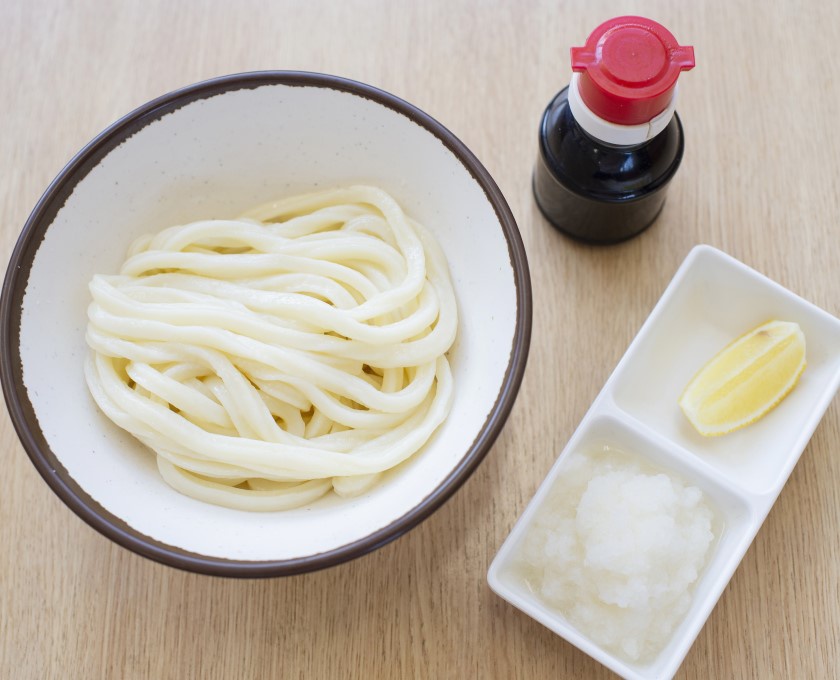
Green chili peppers may get surprisingly hot after a while, so try them in a small amount. Some shops may also offer Usukuchi soy sauce, which is lighter in color but more salty. So don't judge by color and pour in just a small portion to check the taste first.
Phase 3: Reheat Noodles
Noodles are cooled in water after boiling and warmed up again just before serving. Some self-service shops allow customers to warm their Udon by putting noodles in hot water with a colander called Tebo.
“Kake” or “Atsu Atsu” [Kake Dashi]
Hot Kake Dashi, lighter broth, is poured over reheated noodles. In short, it's the simplest bowl of Udon ...the most basic of the basics.
* If you like to try warming noodles using "Tebo" and pouring soup stock over a bowl of noodles from a Dashi tank, order "Kake" at a self-service shop whenever available.
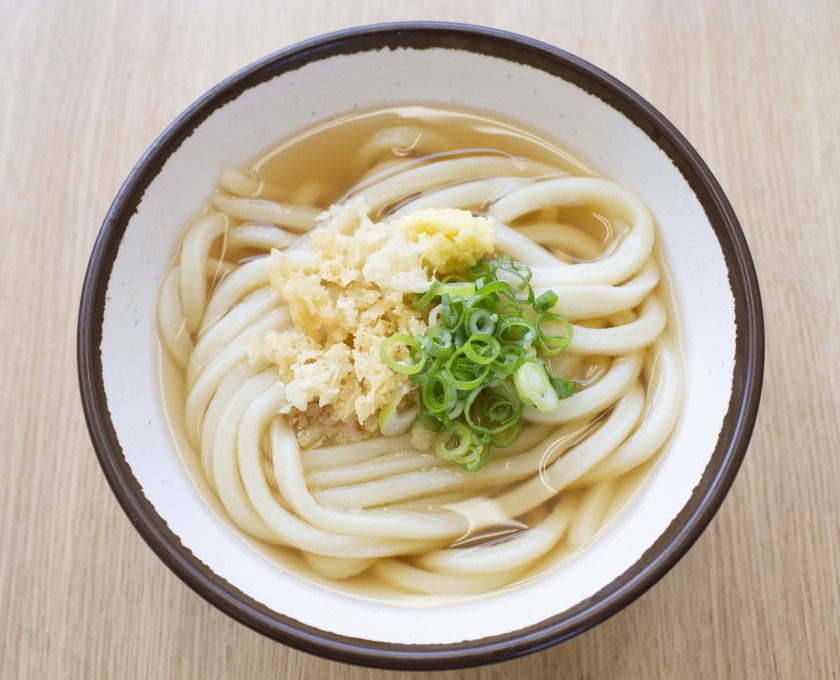
For Your Information...
Not to be confused with Kake, “Kayaku Udon" is usually topped with 5 ingredients, such as a piece of fishcake (Kamaboko or Chikuwa), eggs, Shiitake mushrooms, Tempura bits, fried Tofu (Age), and/or Wakame seaweed.
▼Kamaage Variations:
“Atsu Hiya” [Kake Dashi]
A medium temperature udon that is eaten with hot Kake Dashi, noodle soup, poured over reheated noodles that have been cooled with water after boiling.
"Shoyu (warm)" or "Kijyoyu (warm)"
Pour soy sauce (Shoyu in Japanese) or Dashi Shoyu, soy sauce blended with Dashi as well as vinegar, on the reheated noodles. Some shops may offer Kijyoyu draft soy sauce, which is non-heat-treated fresh Shoyu.
“Bukkake (warm)” [Bukkake Dashi]
Pour Bukkake Dashi on the reheated noodles. As a side note, Bukkake means to pour/splash Dashi directly onto noodles. Bukkake Dashi is made specifically for Bukkake Udon.
“Yudame” [Tsuke Dashi]
"Reheated noodles are served in a bowl of hot water. Dip them in a cup of Tsuke Dashi and condiments.
* The difference from ""Kamaage,"" which is served with hot water in which noodles were boiled, is that noodles are reheated and served in hot water for Yudame."
Phase 4: Simmer Noodles, Added Ingredients and Seasonings to Dashi
It's a menu item in which noodles are simmered in seasoned soup stock with some ingredients.
“Niku” [Kake Dashi]
A variation of Kake Udon. It’s topped with thinly sliced meat, usually beef, which is marinated in a sweet mixture with soy sauce. (Niku means meat.) The seasoning of the meat goes well with Kake Dashi, noodle soup, so you can enjoy the change in taste. Some restaurants may offer a local specialty, olive beef!
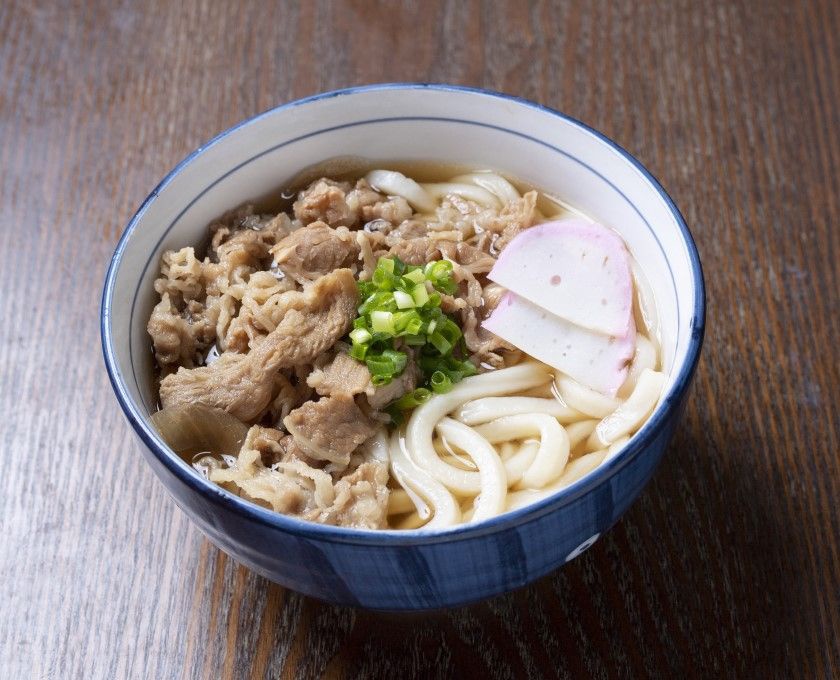
“Shippoku”
This seasonal Udon is served with Kake Dashi with other ingredients, such as burdock, carrots, radish, shiitake mushrooms, meat, and Tofu simmered in soy-flavored broth. Usually restaurants offer Shippoku only in autumn and winter and serve with popular winter root vegetables including taro.
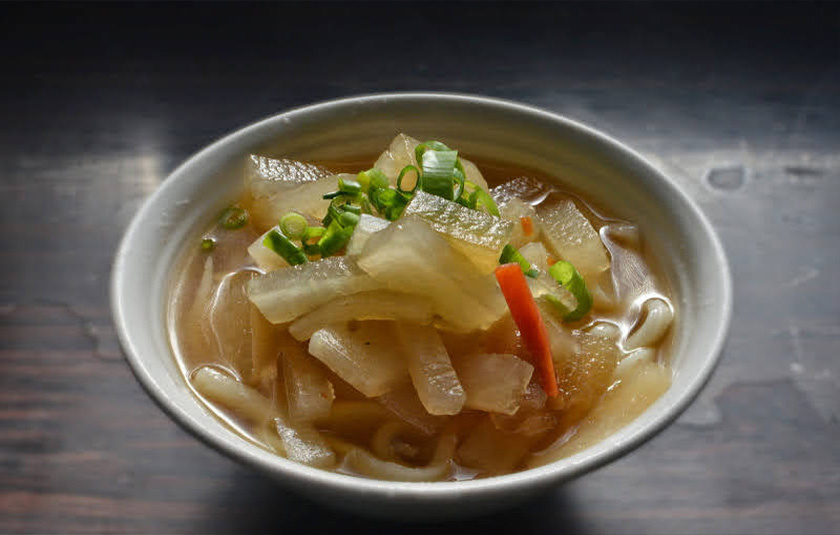
“Curry”
Udon noodles topped with curry.
For Your Information...
Each shop has its own curry recipe that tastes from mild, medium spicy to hot. Some use a thick roux for full-bodied curry, and others use soupy curry broth. Or, authentic spice curry, Thai style, Tsukemen dipping curry sauce arrangements. Some places may not offer curry at all.
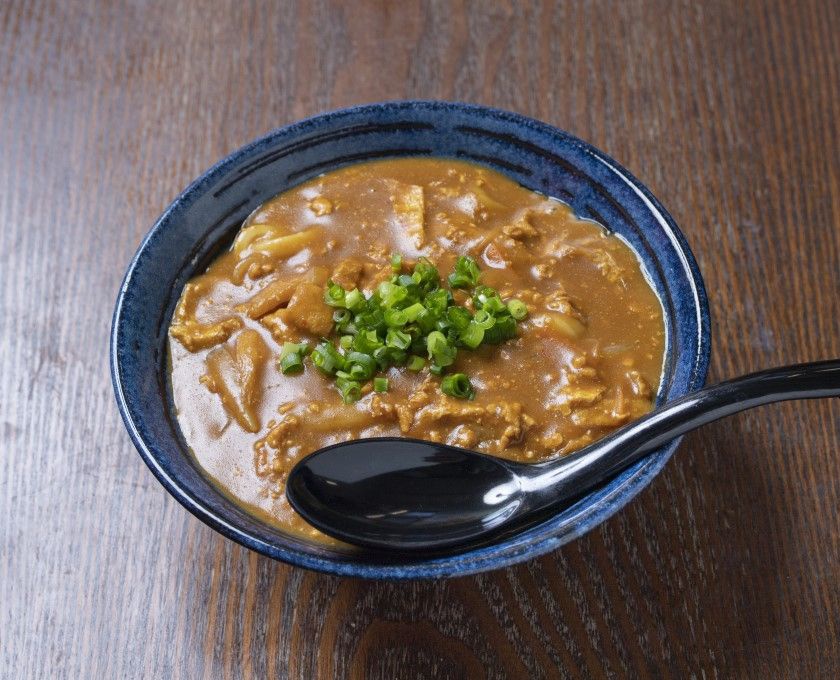
“Nabeyaki”
Udon noodles are simmered with assorted ingredients, such as Kamaboko fish cake, meat, shrimp tempura, eggs, “Fu” wheat bran, vegetables, and Wakame seaweed. Eat it from a hot clay or iron pot.
Accompaniments for Udon:
Condiments (Free Toppings)
- Chopped Green Onions Characterized by slender onion tops and crispy texture
- Grated Daikon Radish
- Ginger Ginger instead of Wasabi is usually added to Tsuke Dashi, dipping sauce.Some people put it in Kake Dashi, noodle soup, too.
- Sesame Seeds
- Tempura Bits
- Ichimi (ground red chili pepper) or Shichimi (ground red chili pepper plus other spices)
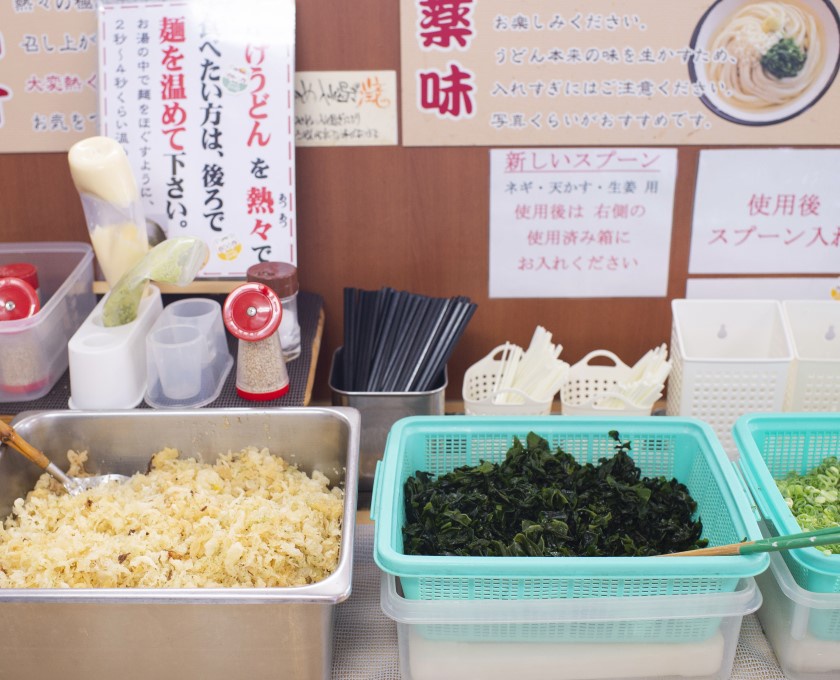
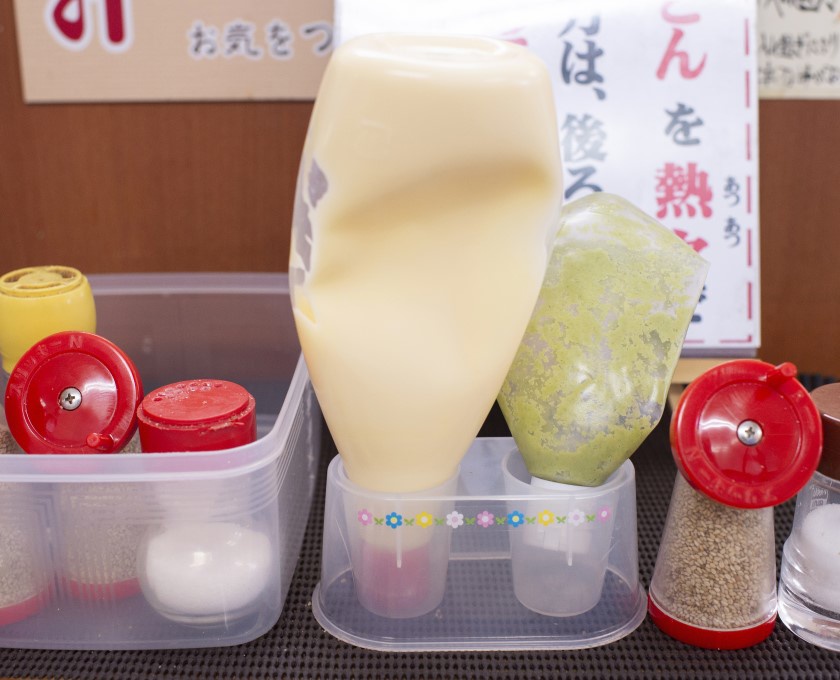
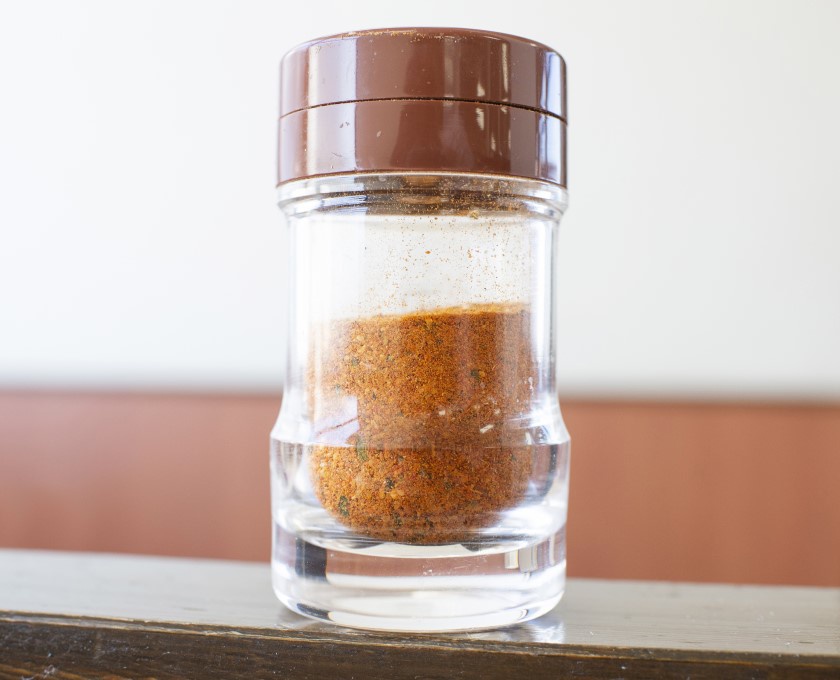
Optional (Paid Toppings)
- Kitsune, a large piece of fried Tofu, which said to be a fox's favorite food
- Wakame, seaweed Some self-service shops offer this for free with other free condiments.
- raw eggs Some shops may offer quail eggs and/or Onsen Tamago, a poached egg inside its shell.
- Niku, sliced meat marinated in a sweet mixture with soy sauce.
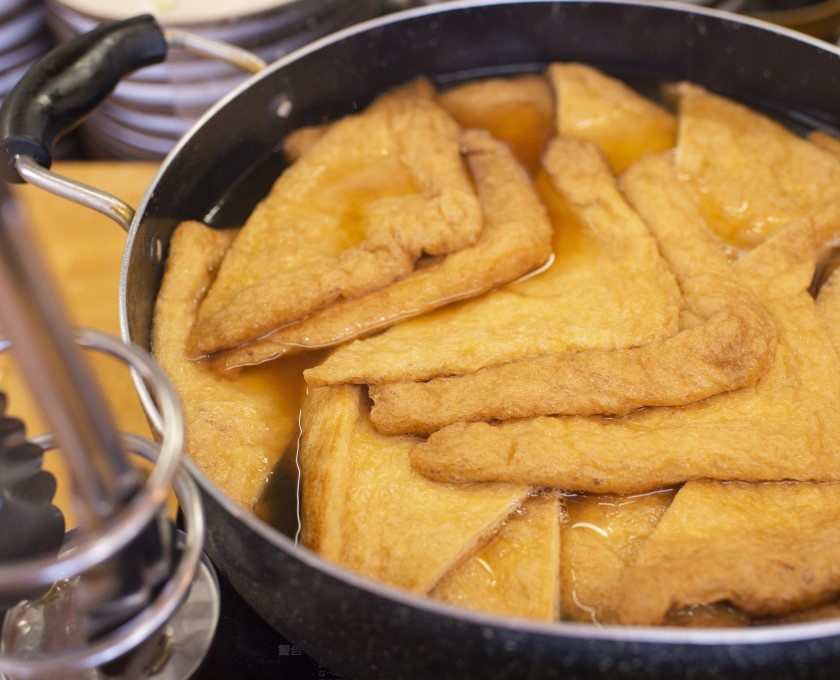
Side Menu 1 (Top off your Udon!)
- Tempura, various seafood and vegetables battered and deep fried
- Tempura , fried fishcakes
- Furai, various seafood and vegetables coated with Panko breadcrumbs and deep fried (fried food)
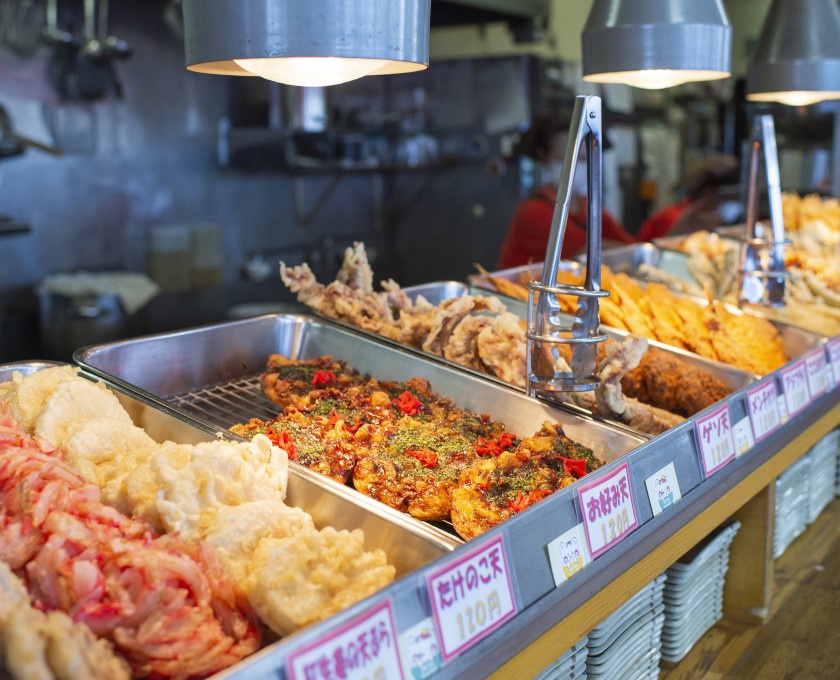
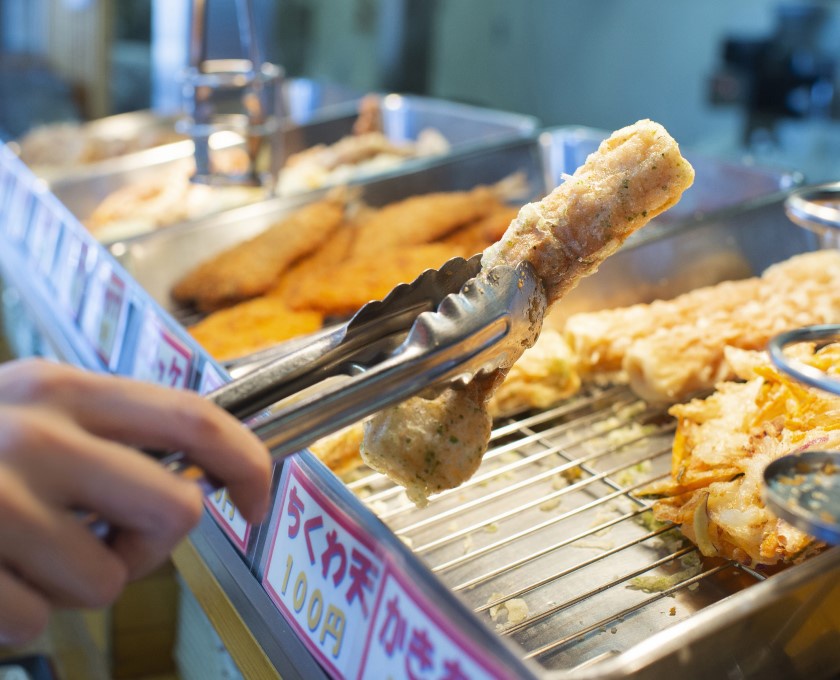
For Your Information...
Tempura has two meanings in our area, Sanuki. One means food battered and fried in oil. The other means deep-fried seafood paste, which is called Satsuma-age in the Greater Tokyo and surrounding areas.
Attention!
You usually find popular Tempura made of Chikuwa and Geso, squid tentacles at Udon noodle places. Visitors from outside Kagawa prefecture are often amazed with a comprehensive Tempura lineup, which may include chicken, soft-boiled egg, seasoned bamboo shoots, simmered Koya-dofu, cooked sweet kidney beans, and even croquettes.
We hope you enjoy the unique cuisine of Kagawa, where cooked vegetables and other food are made into Tempura!
At a self-service shop, it’s a good idea to put the toppings on a separate plate, which is usually available. If you place them on top of Udon noodles, it will get in the way when you warm the noodles up. Also the broth may spatter when you pour Kake Dashi from the tank. After sitting at the table, you can place the toppings on your Udon noodles.
Side Menu 2
- ice dishes, including Onigiri rice balls, various Sushi, seasoned rice, Ohagi rice cakes
- a la carte
- Oden
Oden, which is a traditional Japanese stew, made with boiled eggs, Daikon radish, and fish cakes simmered in Dashi stock, is available in many Udon eateries. It is usually eaten with Karashi Miso, which is a mixture of white miso and hot mustard.
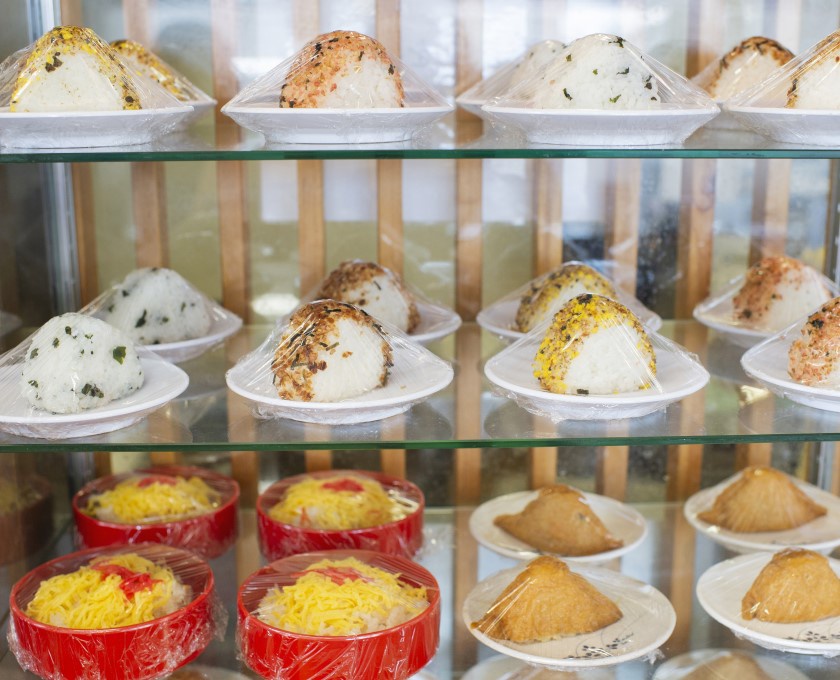
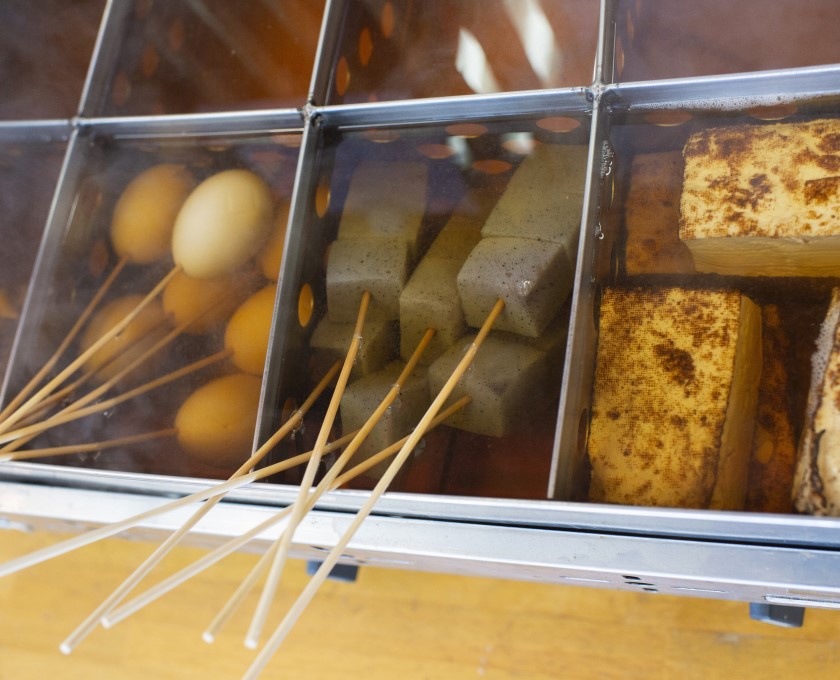
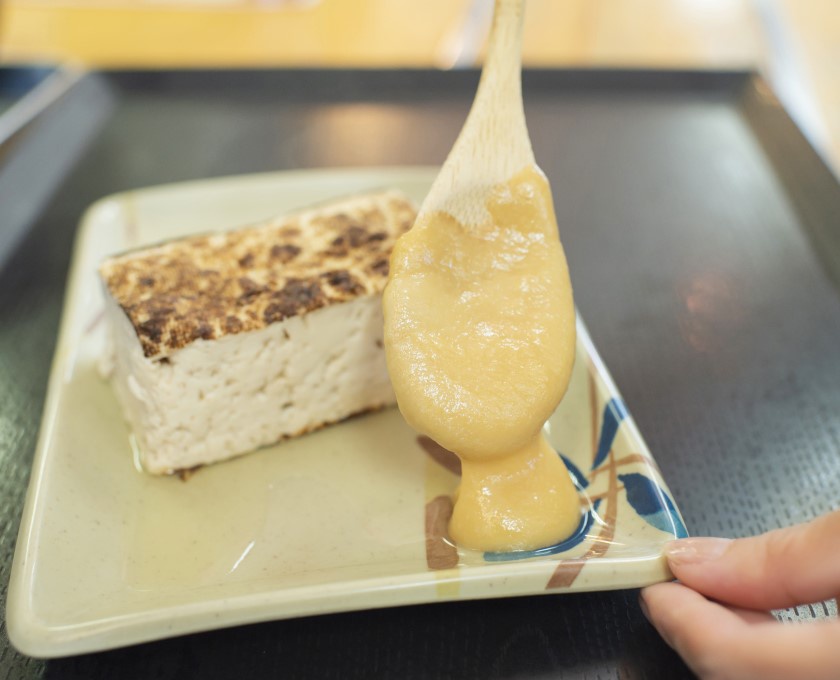
Onigiri rice balls, Inarizushi (sweet fried tofu skin stuffed with sushi rice), and Oden are almost always served with Udon, which is unique to the Sanuki Udon restaurants.
Some full-service Udon restaurants offer a smorgasbord featuring Oden and other side dishes that you may take to your table. You can eat them while waiting for Udon. When a server brings your Udon, tell them what you got and pay when you leave.
If you want to know more about Sanuki Udon, please check the VISIT KAGAWA - Kagawa Official Tourism website:
www.my-kagawa.jp
https://www.my-kagawa.jp/en/
To Everyone Doing An Udon Hopping Tour
No matter which restaurant or what menu you choose, you’ll find delicious Udon that we take pride in here in Sanuki Udon Country. Please enjoy the culture unique to Sanuki Udon establishments while eating delicous Sanuki Udon to your heart's content!
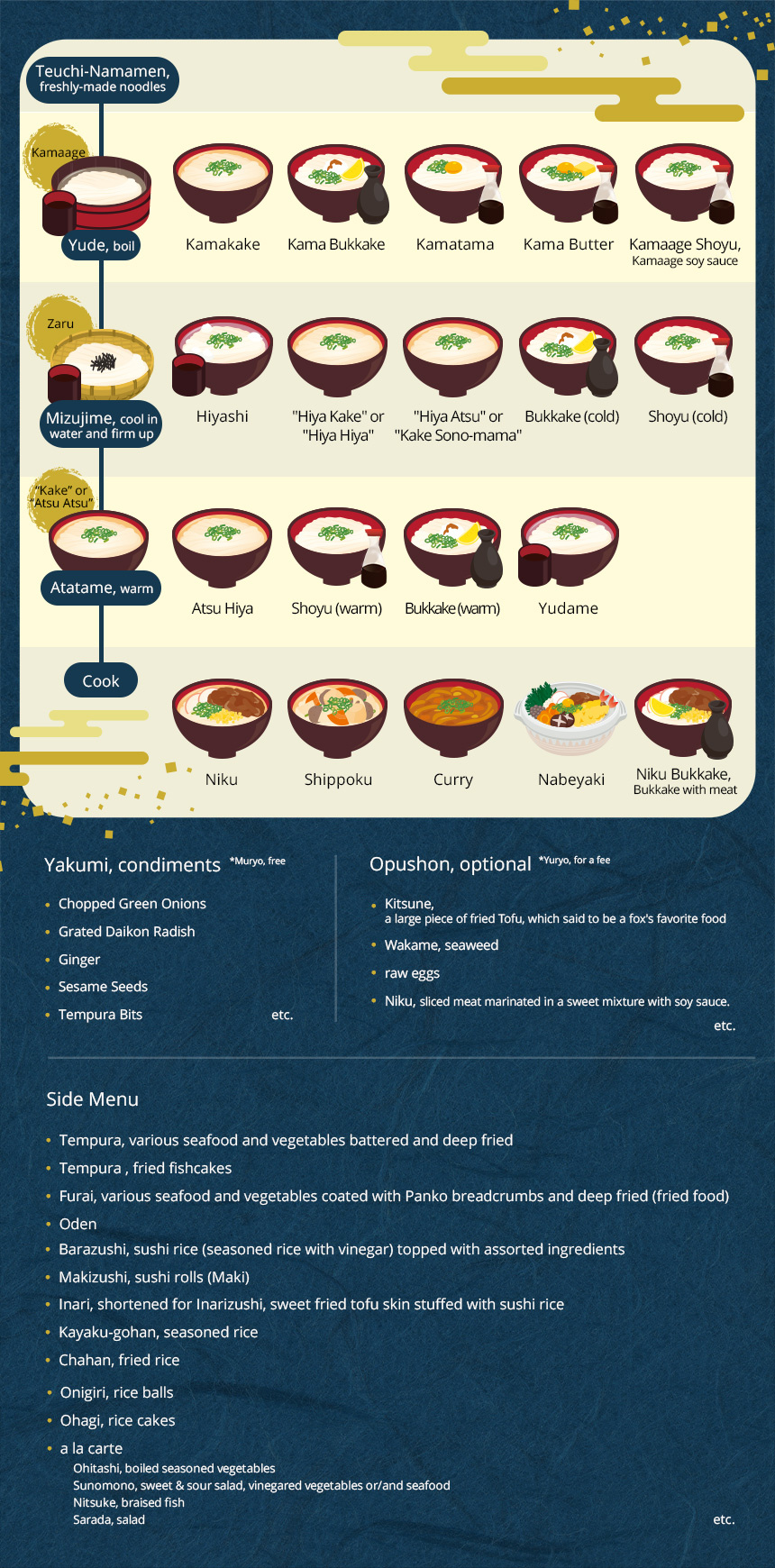
Udon Taxi®: Travel with a Sanuki Udon Noodle Master
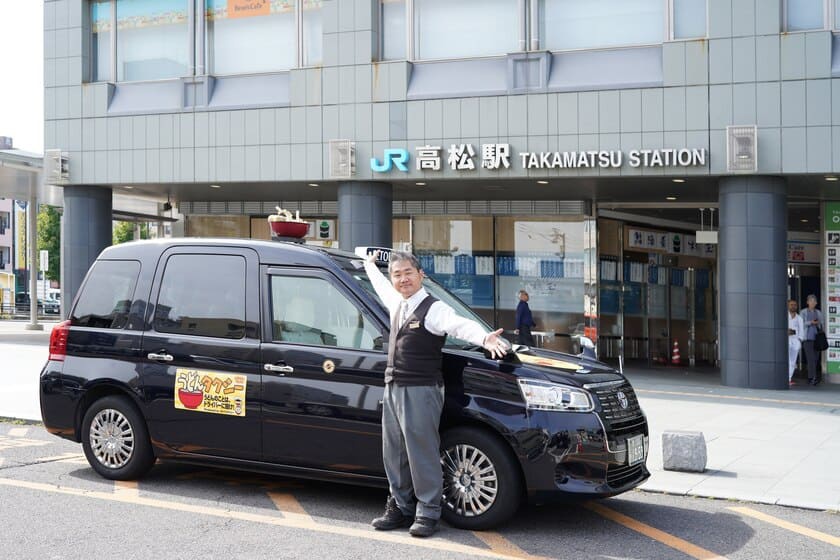
Do you know Udon Taxi®,* a local taxi tour in Kagawa?
The tour's drivers, who have passed three difficult examinations -- specifically written, practical and udon noodle making examinations -- take you to well-known udon restaurants as well as unique and little-known restaurants as a tour guide.
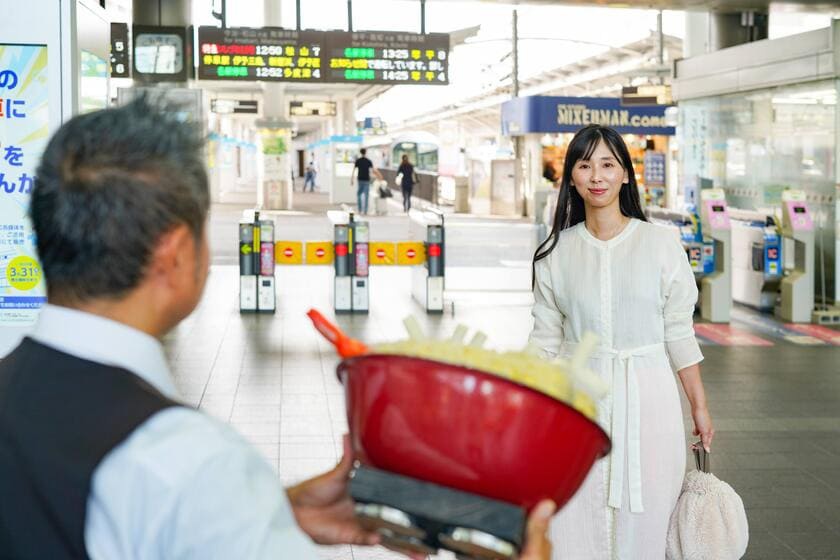
The driver can pick you up at Takamatsu Station, Takamatsu Airport, a hotel or any other place you wish.
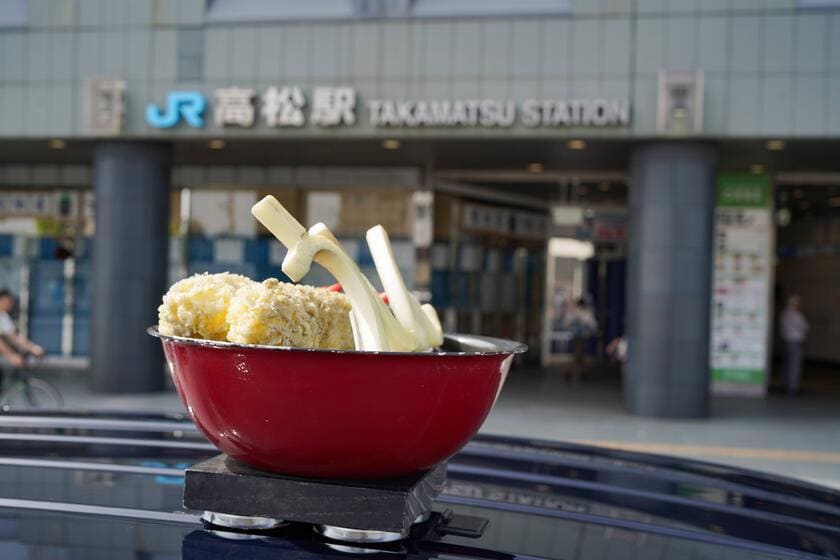
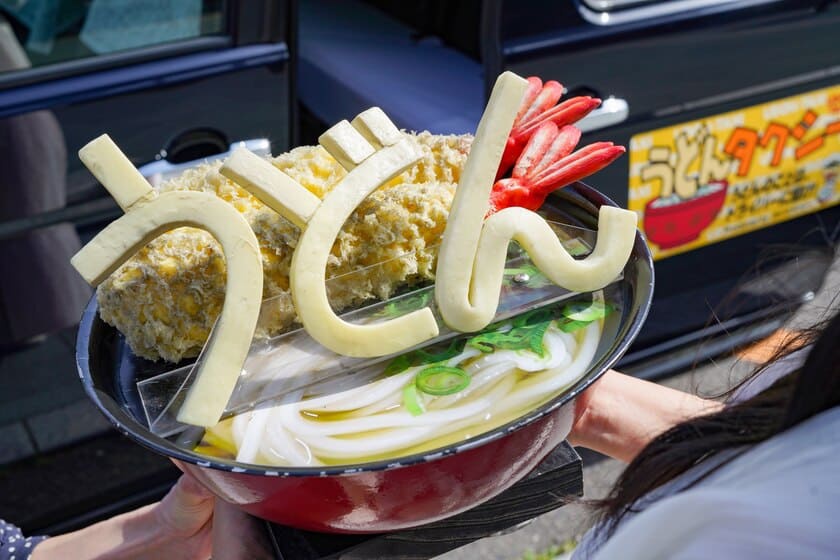
On the roof of the taxi, there is a big bowl of udon noodles ornament which looks somewhat like a kind of Japanese-style lantern. People passing by look back at the conspicuous car.
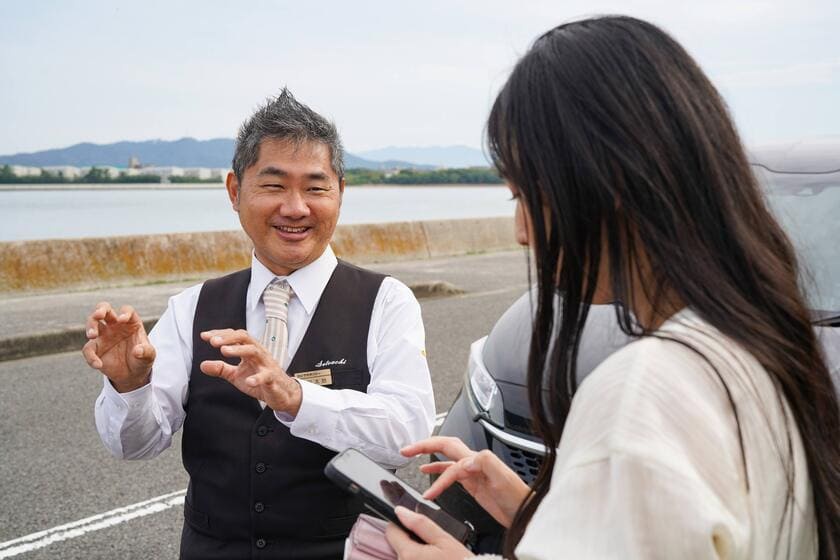
First, the driver asks the customer what their favorite flavor of udon noodles is.
Besides knowing good restaurants, the drivers can address specific preferences such as thick or thin noodles, soft or chewy noodles and dried sardine broth or blended broth. They are also able to fulfill requests regarding the tasting of different types of kakeudon (a bowl of udon noodles in hot broth) so that you can compare them. This versatility makes the service very attractive.
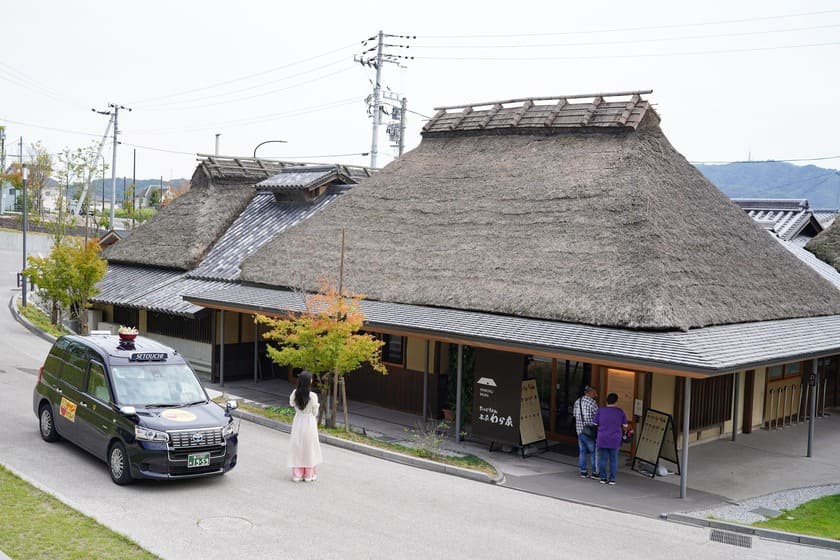
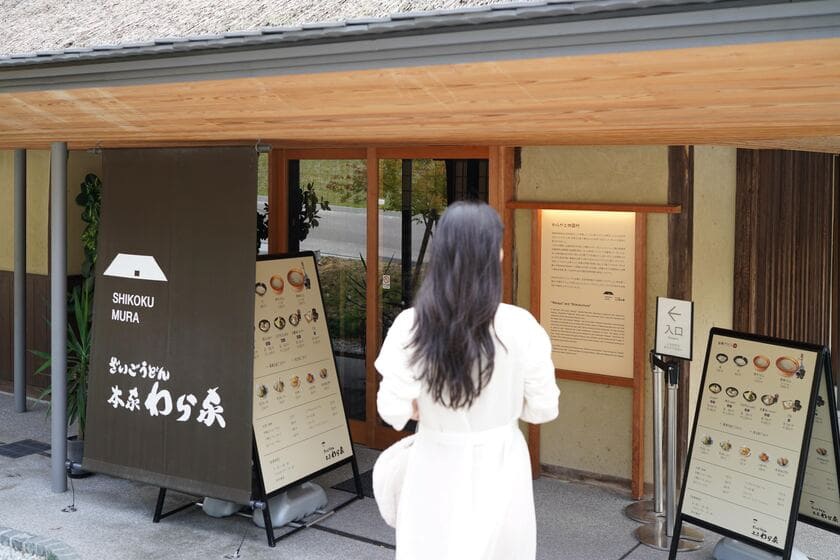
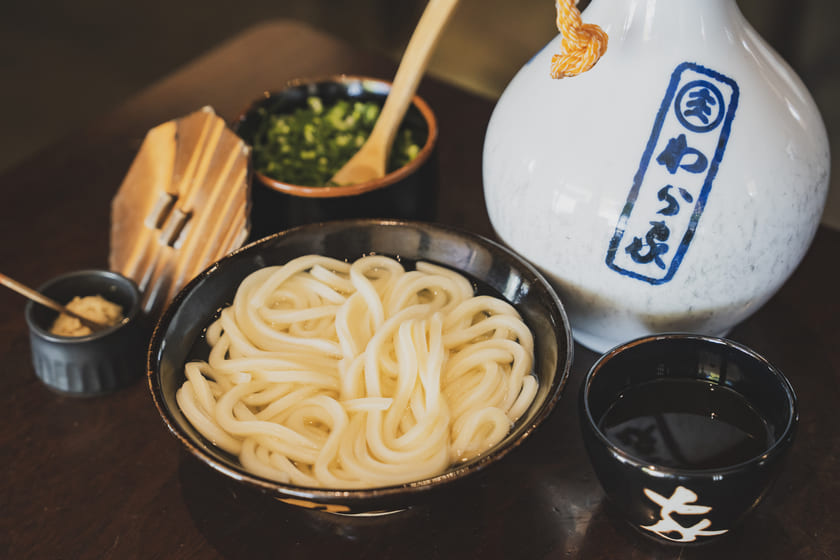
The taxi service is convenient for tourists because it enables them to efficiently visit the udon restaurants dispersed across the area.
During the ride, the driver will share detailed stories about specific udon restaurants and the history and culture of Sanuki udon noodles so you can increase your knowledge of them.
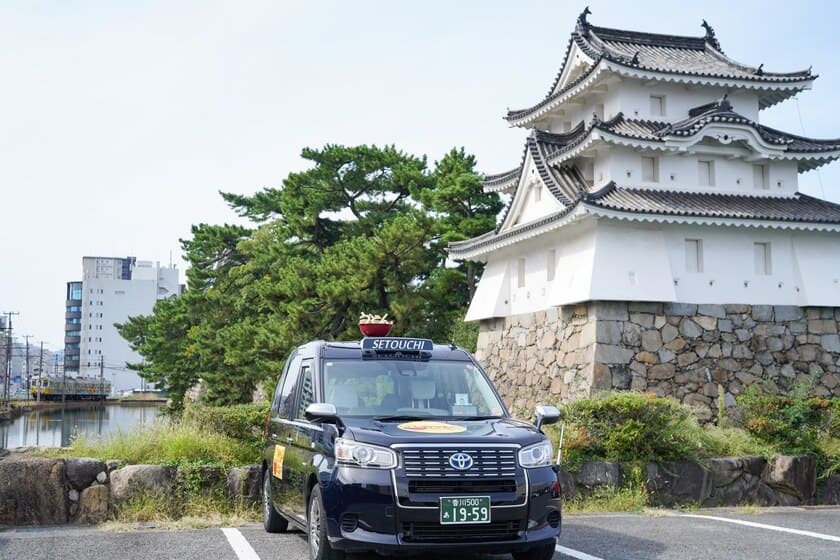
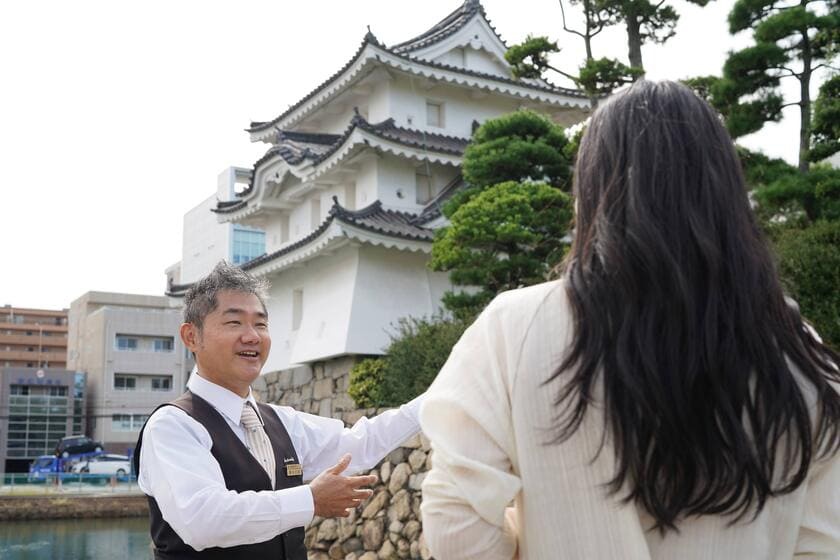
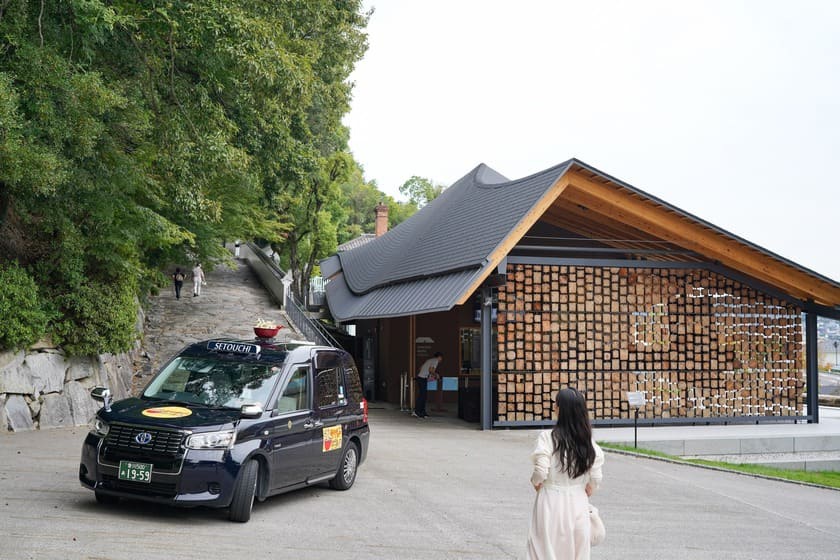
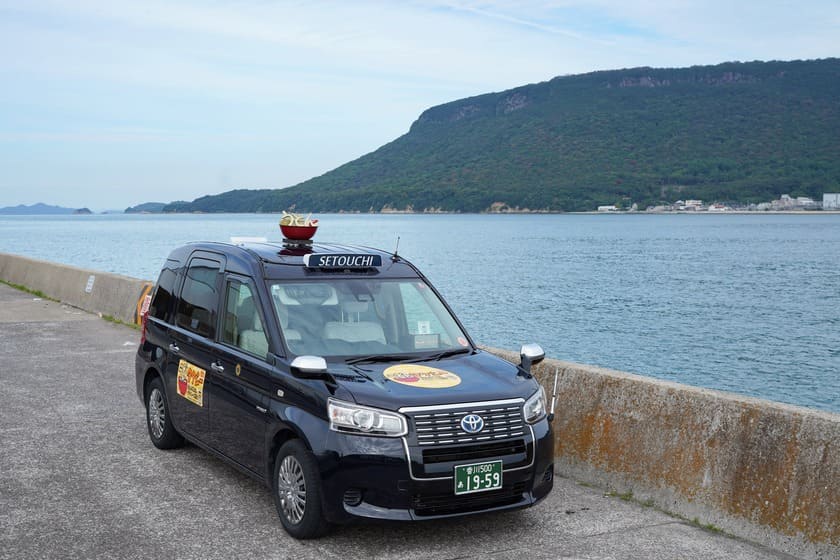
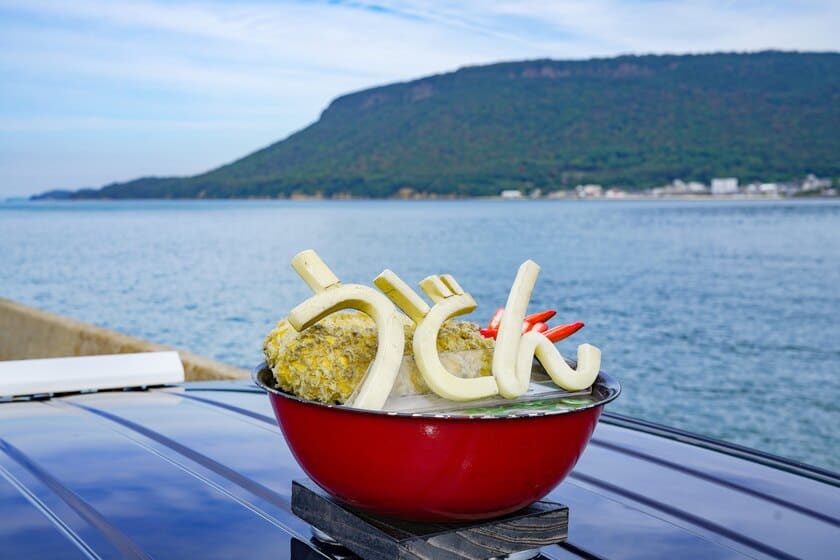
Aside from visiting udon restaurants, you may want to drop by sightseeing spots or take a photo of the Udon Taxi® with the Seto Inland Sea in the background. The driver can accomplish all of this.
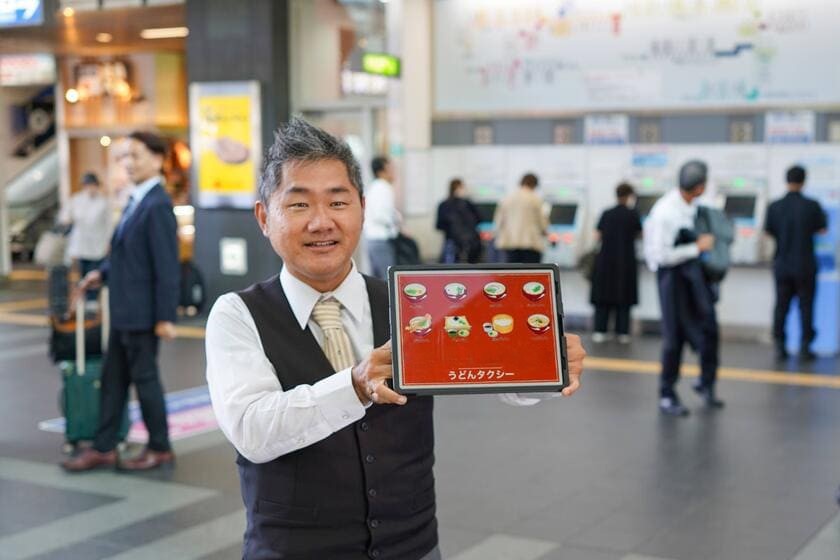
A Sanuki udon noodle connoisseur will guide you through a memorable udon tour of Takamatsu, Kagawa.
See YouTuber Okajun’s video of his udon eating tour.
▼Udon Kingdom: See how many bowls of udon I could eat in Takamatsu.
https://youtu.be/LrYVHeTuY2A
Use the following link to book an Udon Taxi® tour.
Official website:https://www.udon-taxi.com/
https://www.youtube.com/@udontaxi_japan
Reservation Center:050-3537-5678(10:00~12:00/13:00~18:00)
Operating company:Kotohira Bus Co., Ltd.
※Udon Taxi® is a registered trademark of Kotohira Bus Co., Ltd.
Many different taxi companies other than Udon Taxi® offer udon and sightseeing tours. The information below is for reference.
- Setouchi Taxi https://setouchi-taxi.co.jp/
- Nisshin Taxi https://nissin-taxi.co.jp/service/udon.html
- Kukotaxi http://kukotaxi.com/
- Kotoden Taxi https://www.kotoden.co.jp/publichtm/bus/taxi/sightseeing/KSKsightseeing.html
Gathering date:2020.12.23
- KEYWORDS




